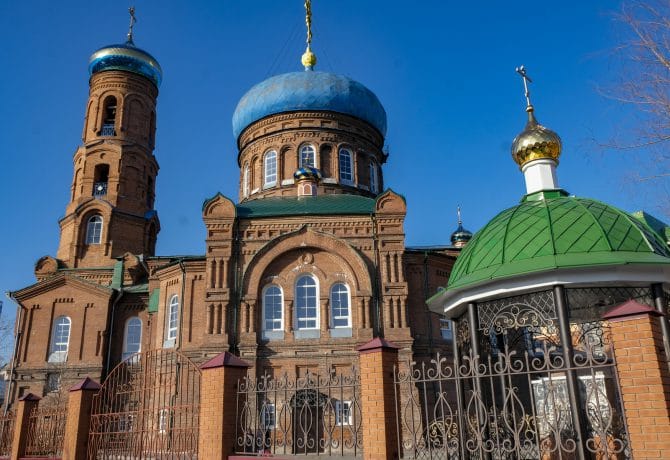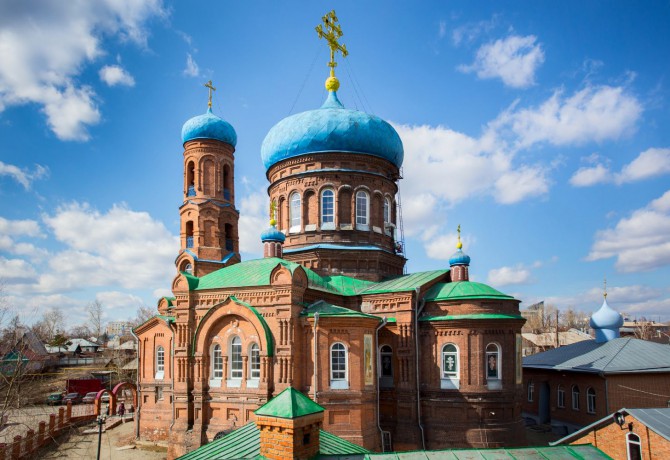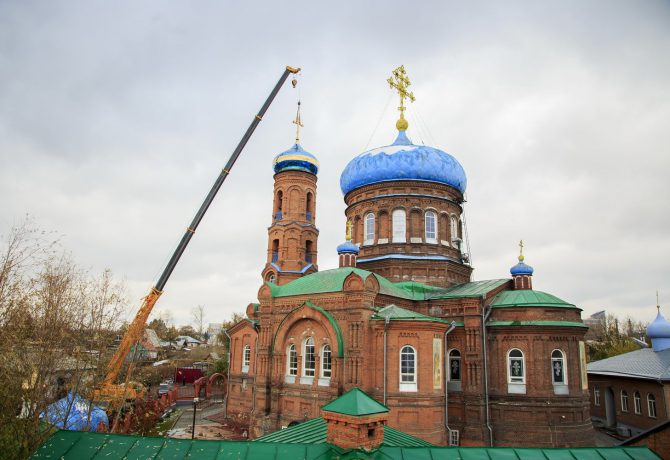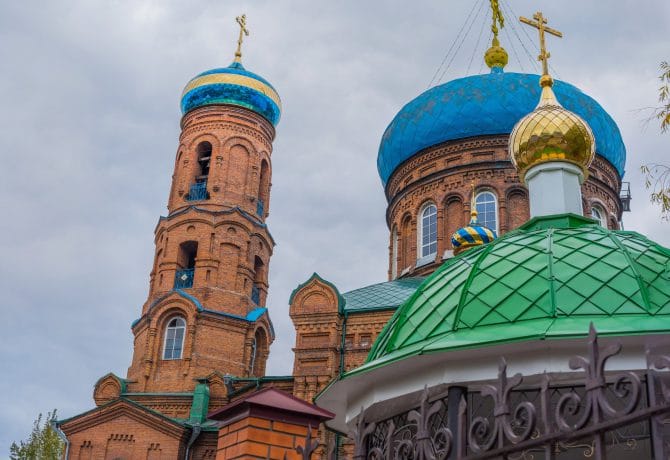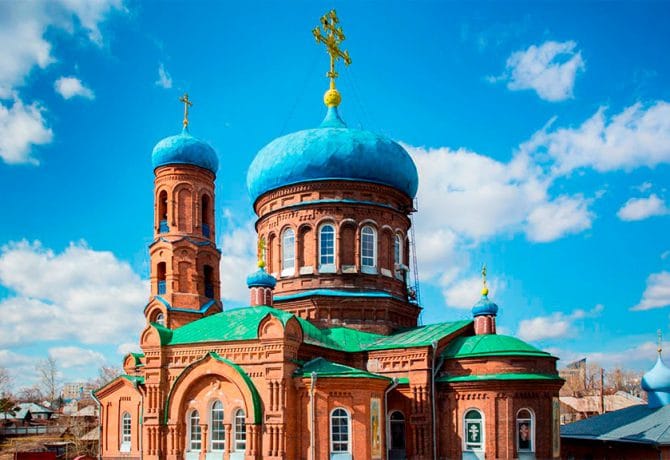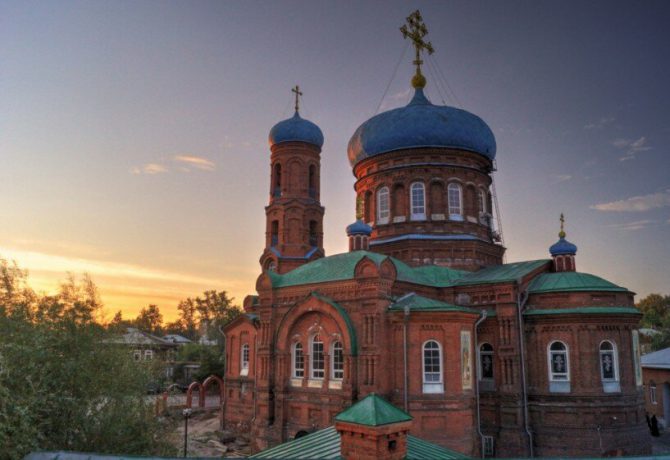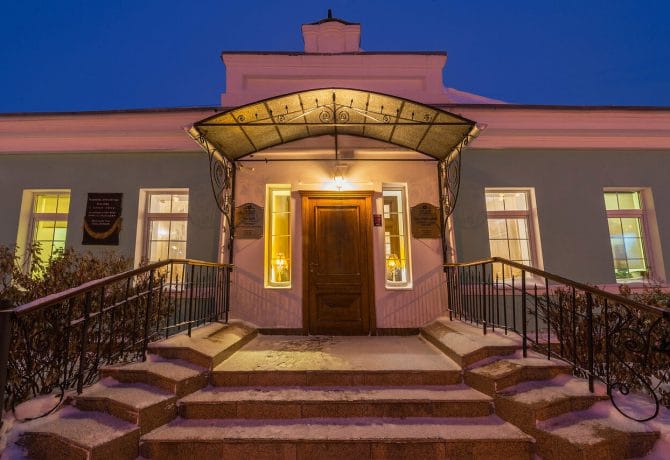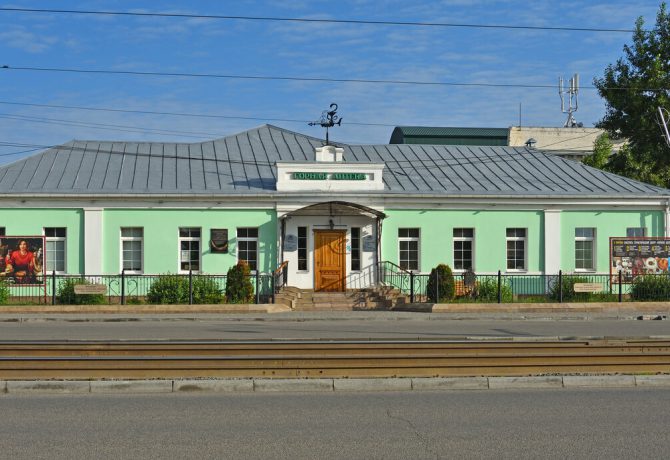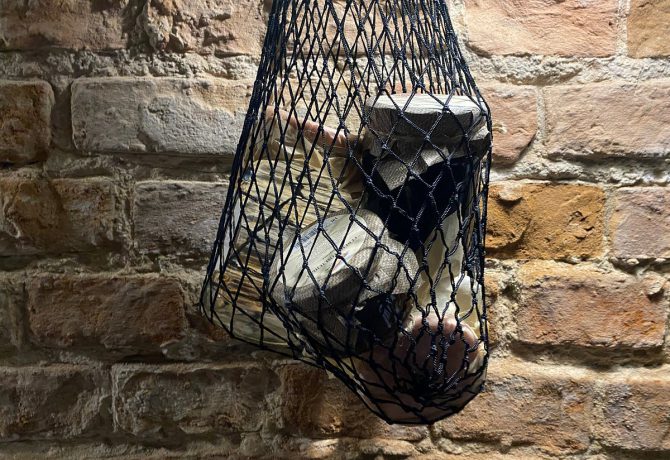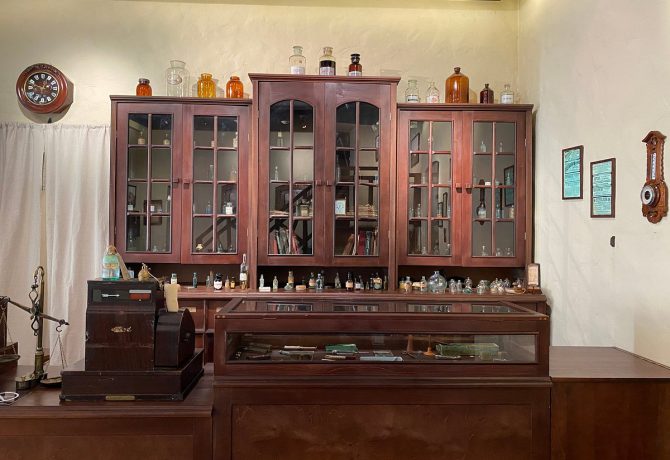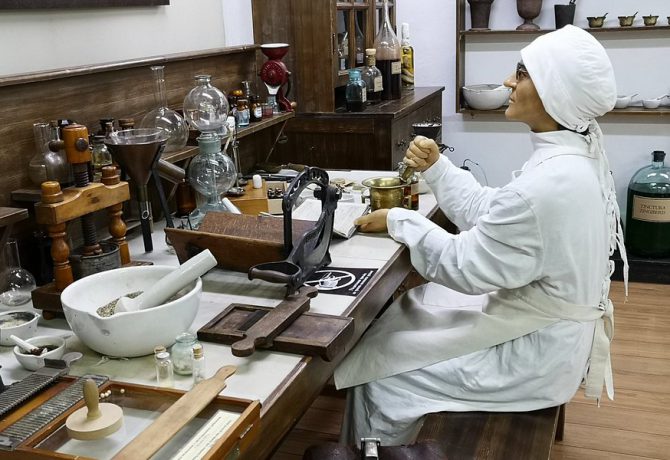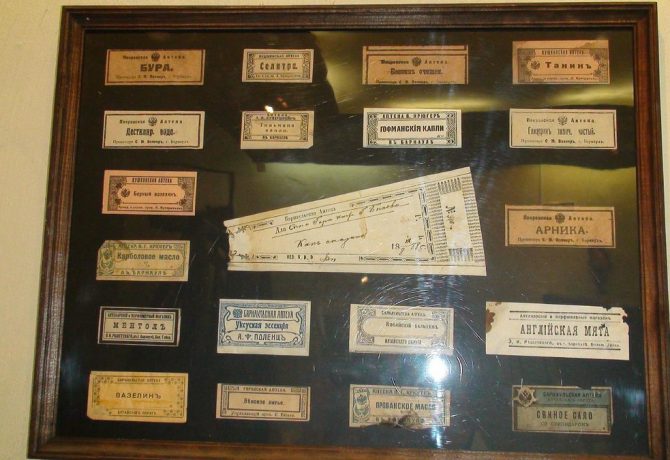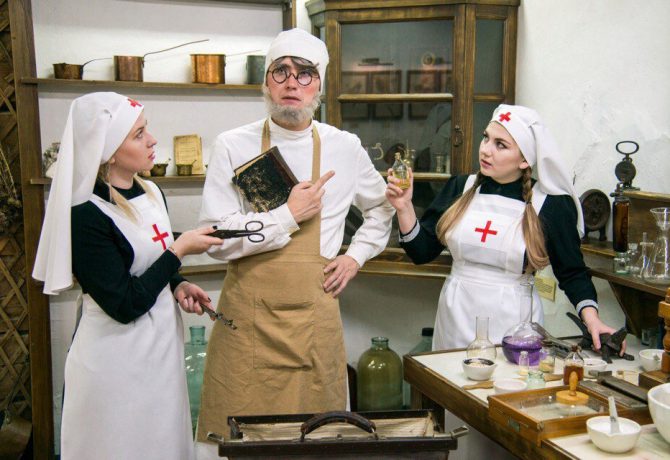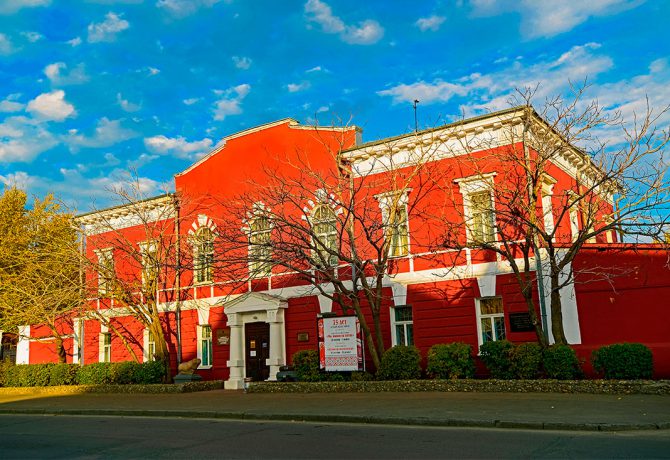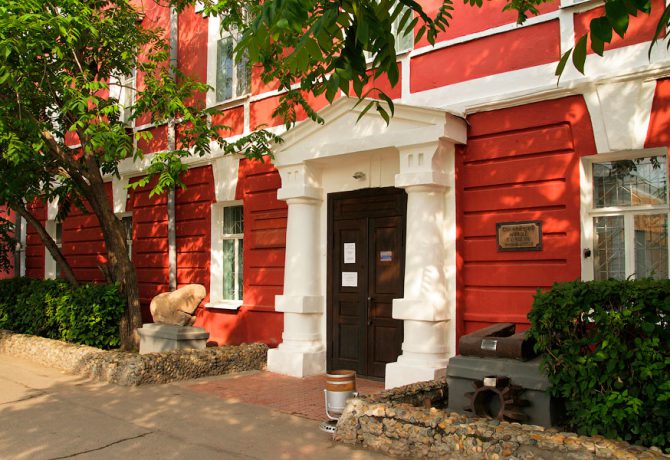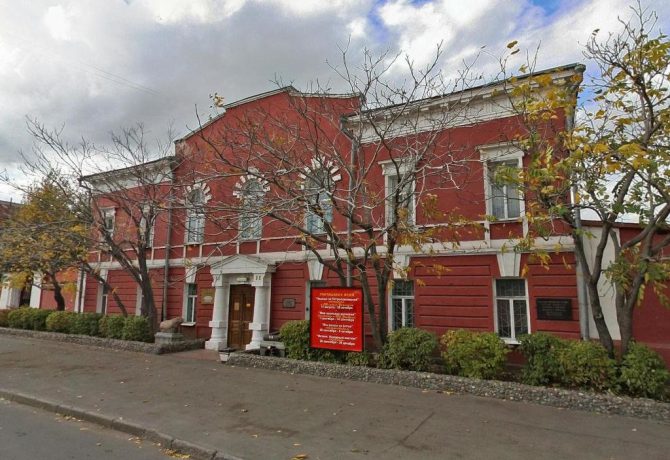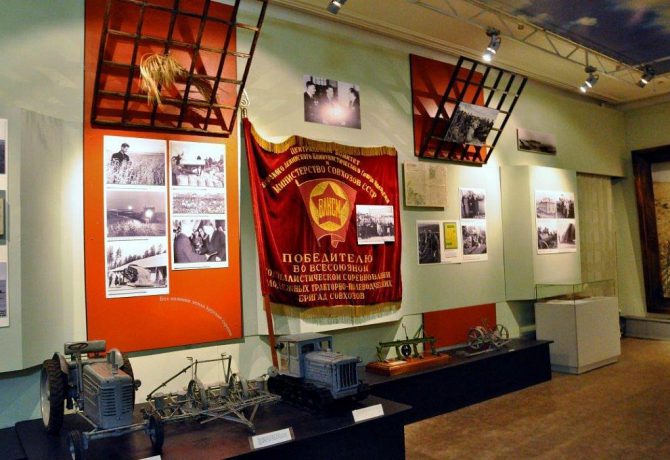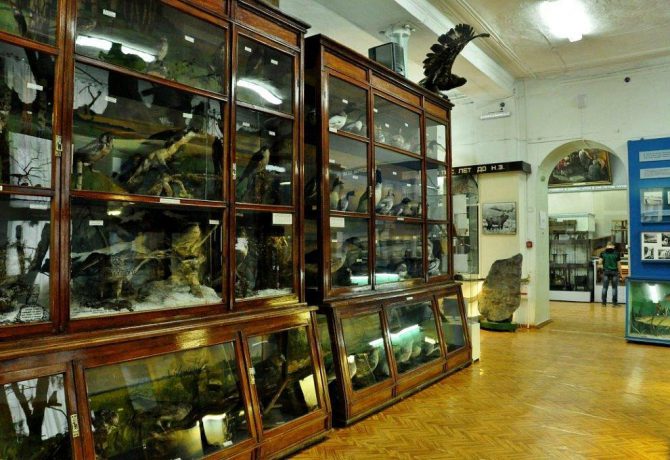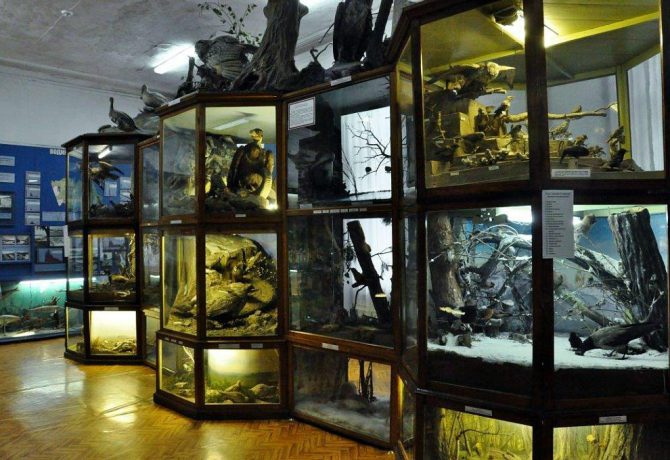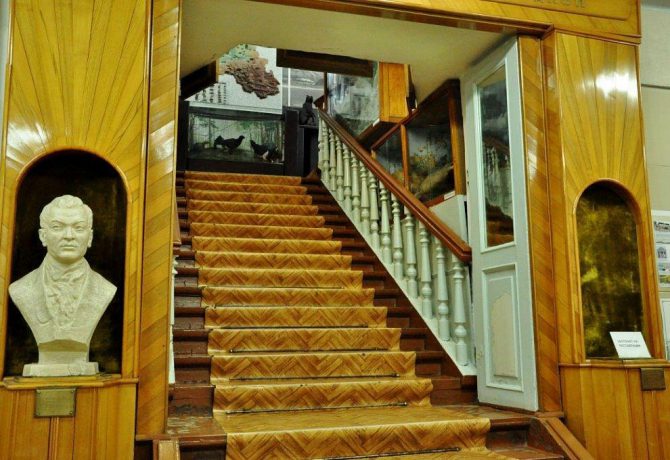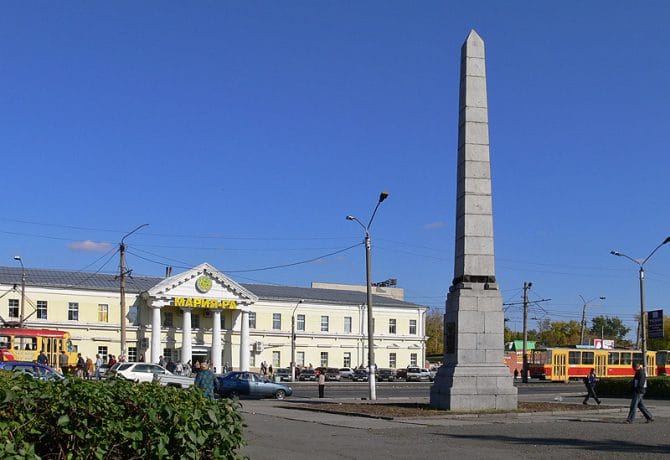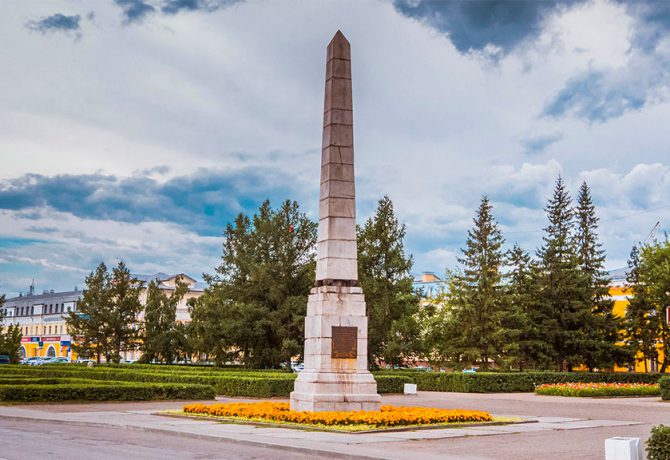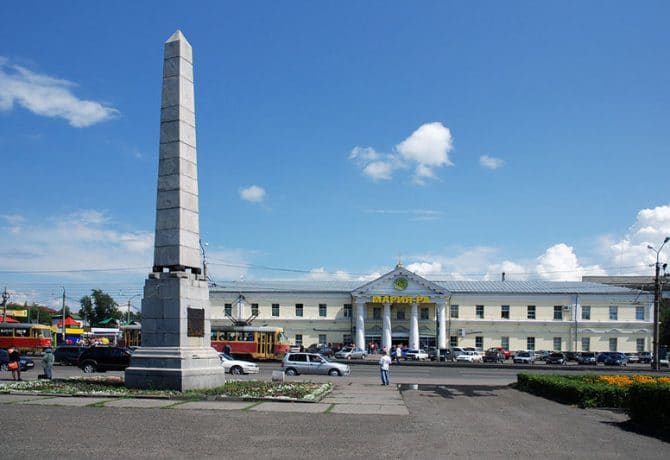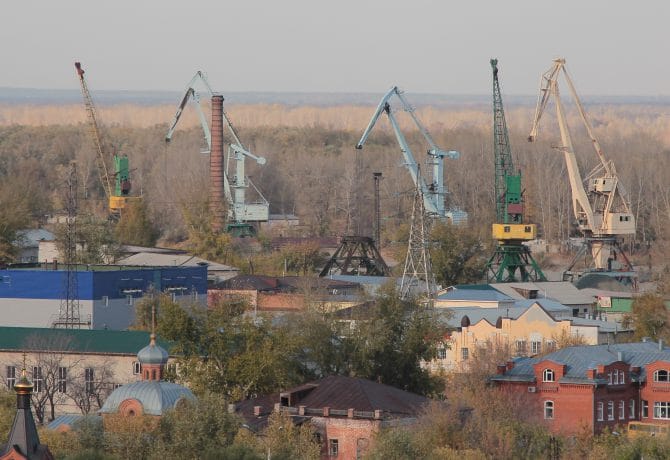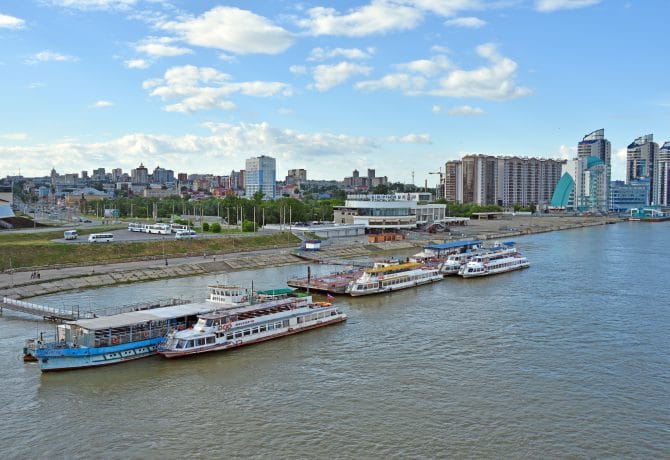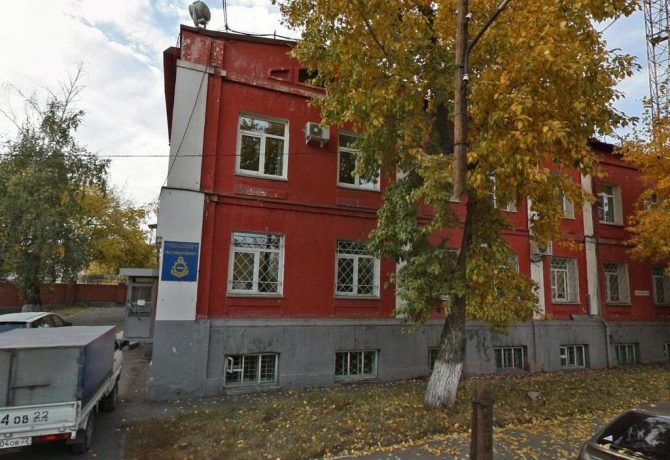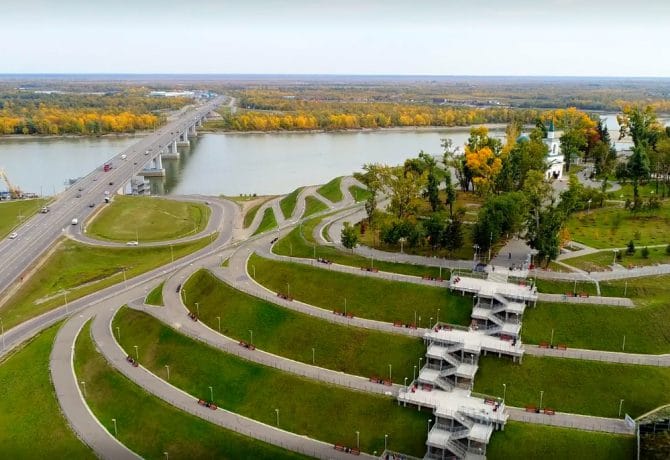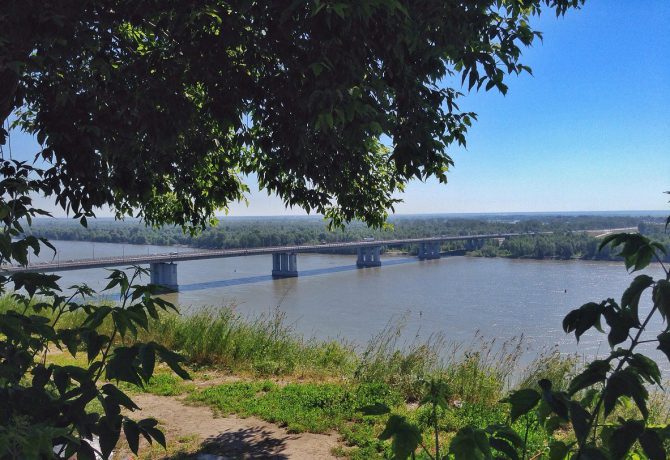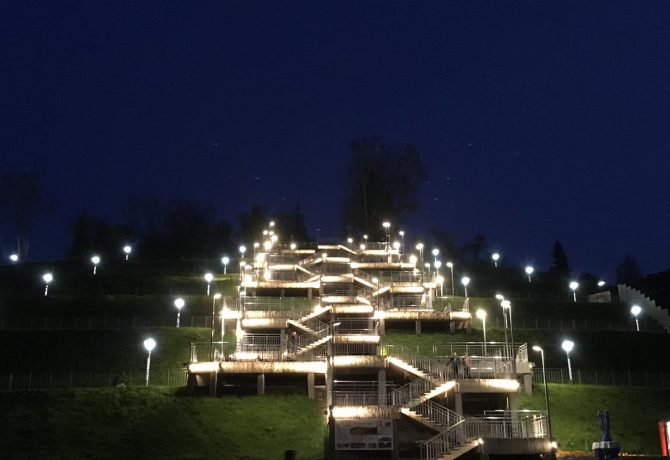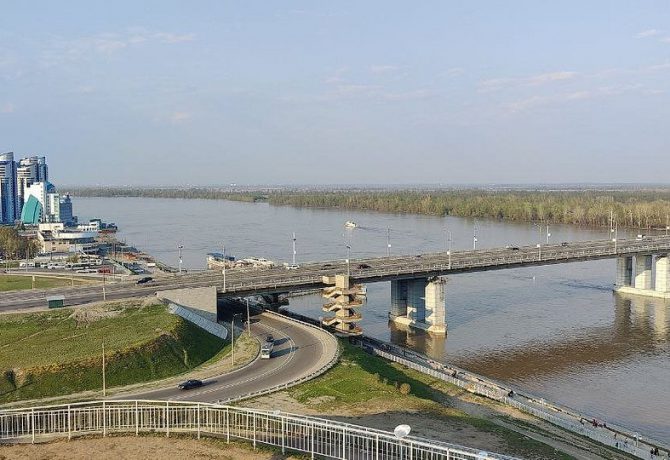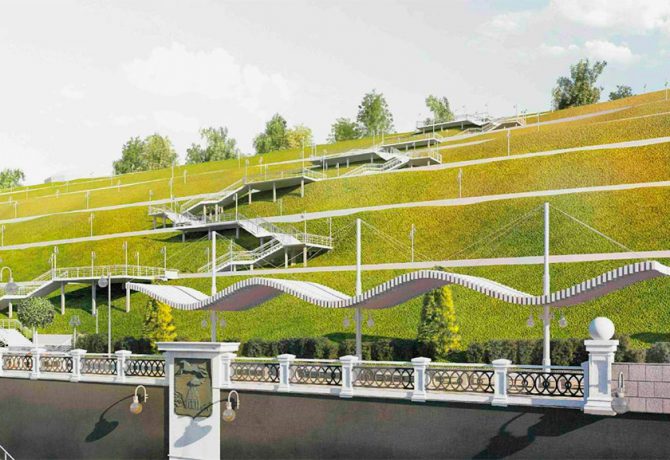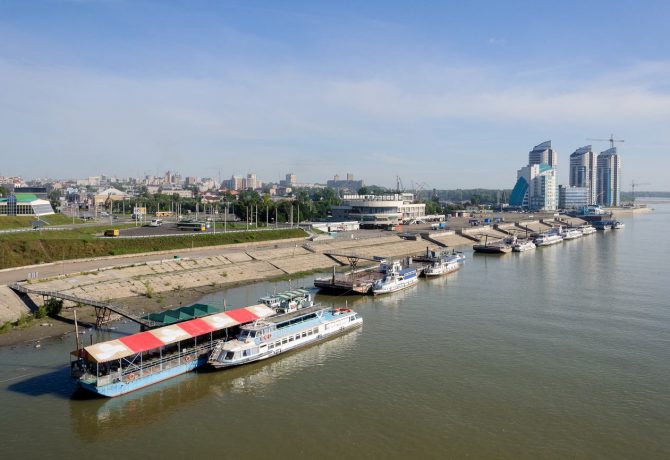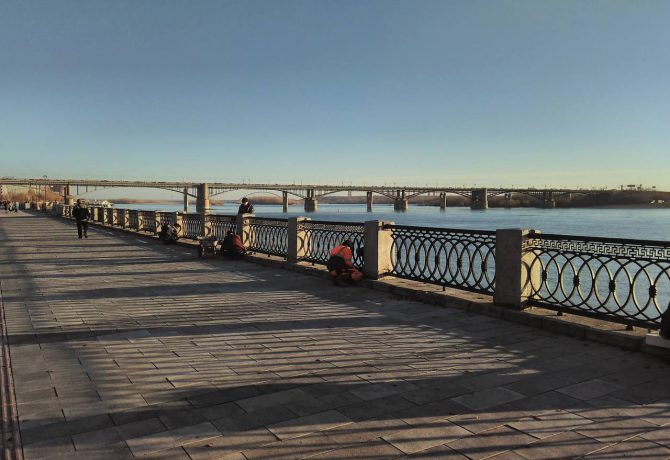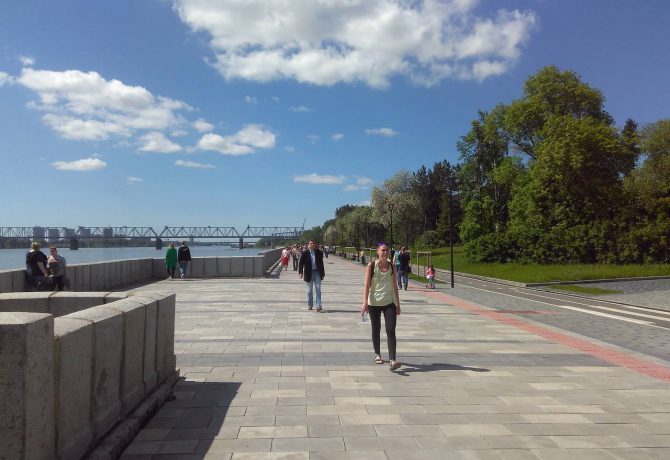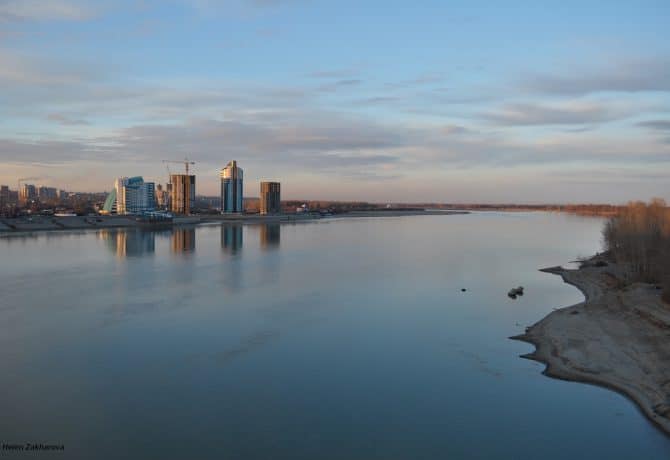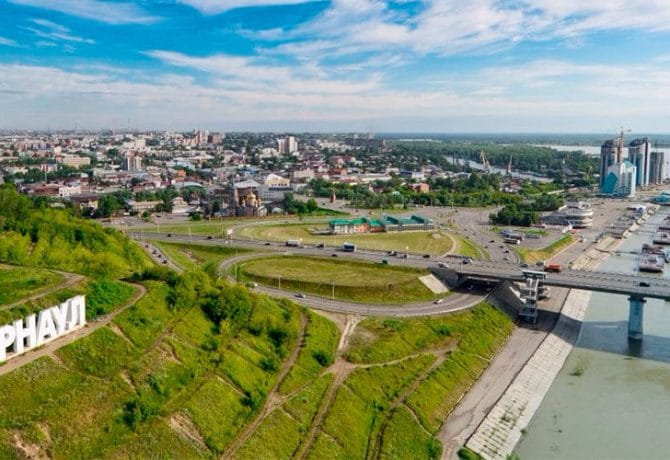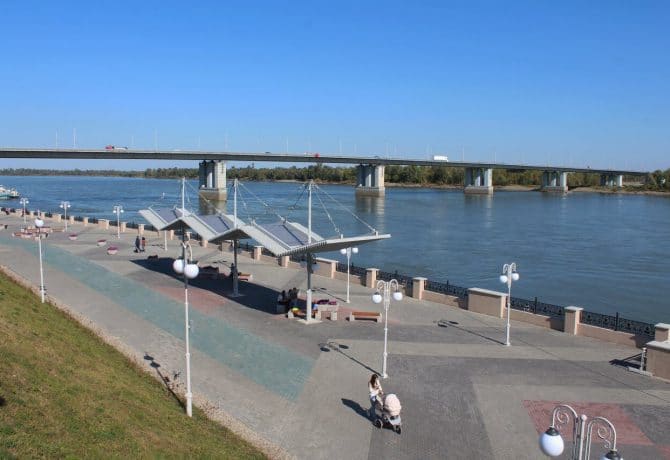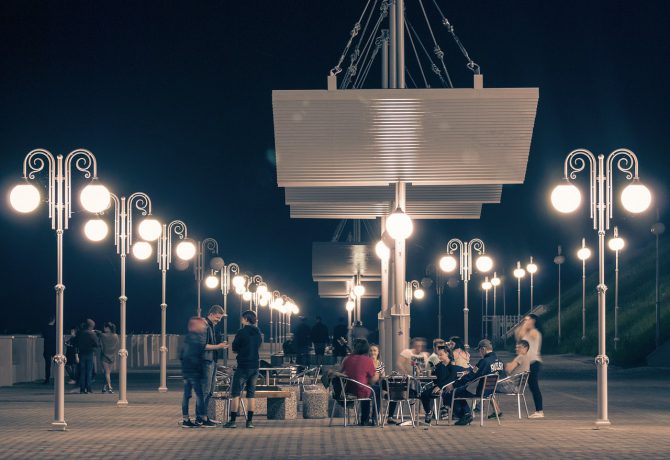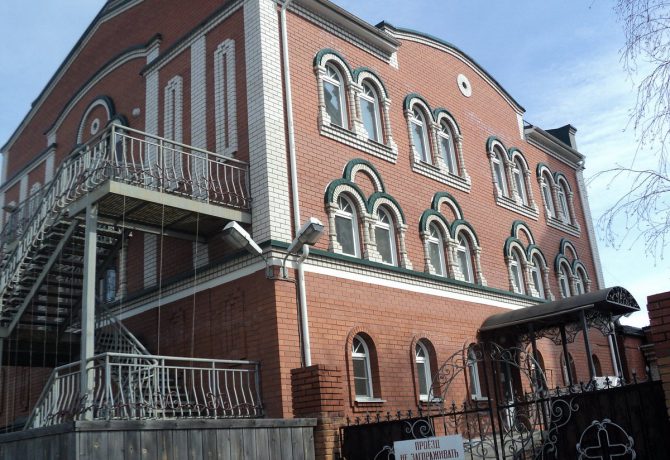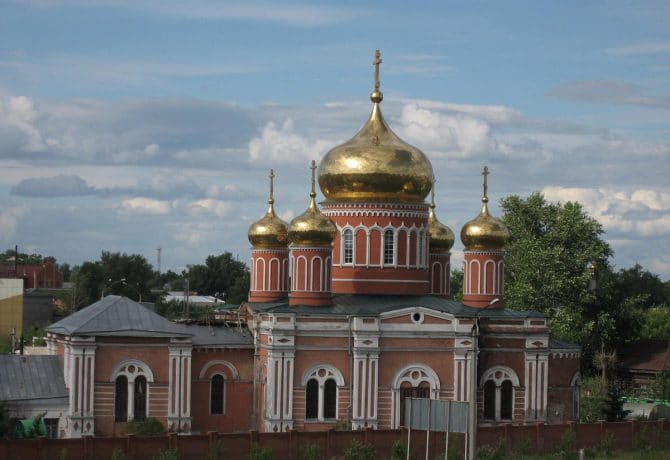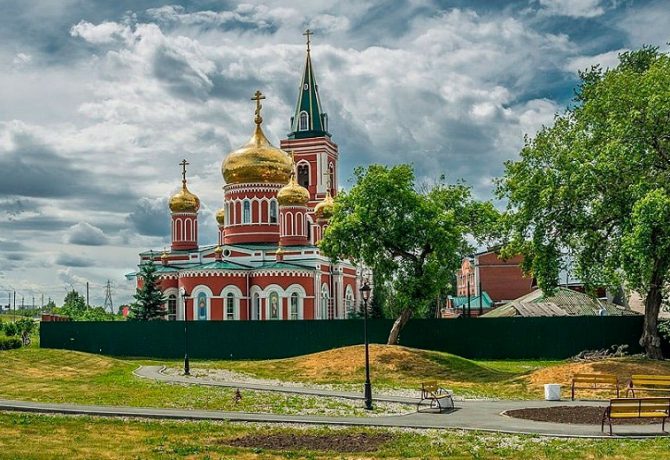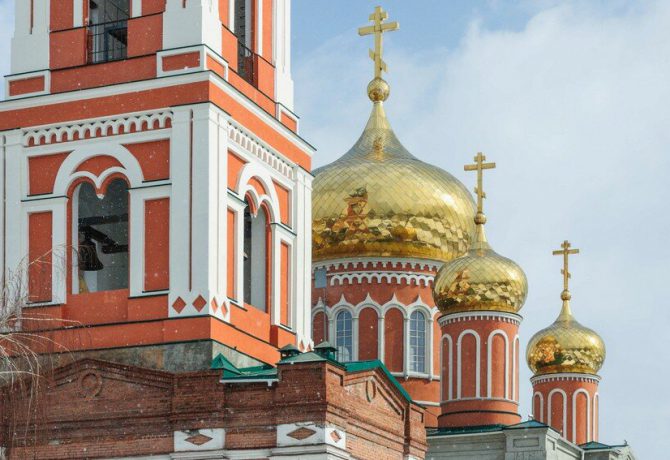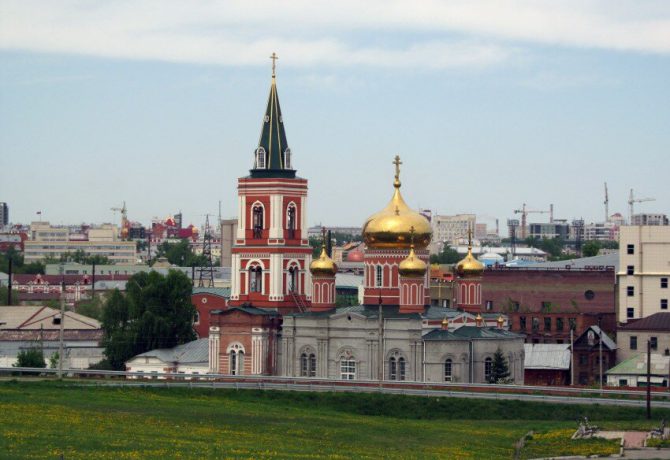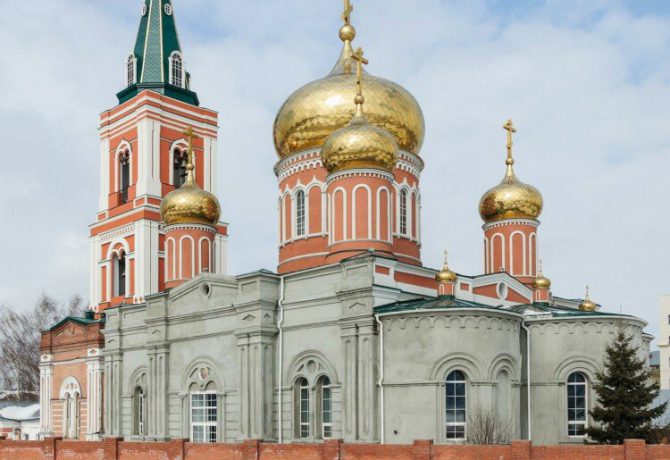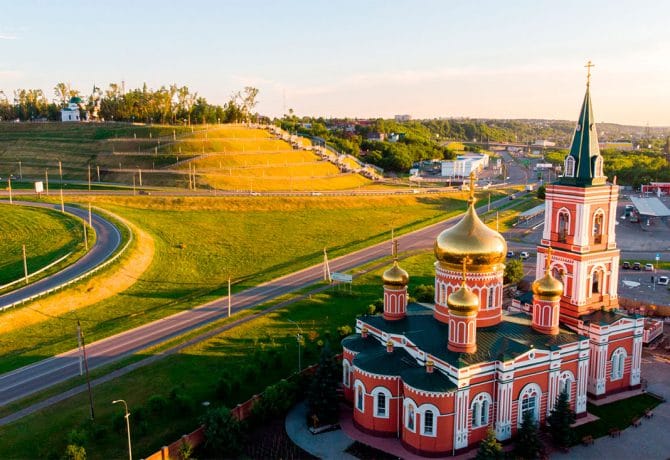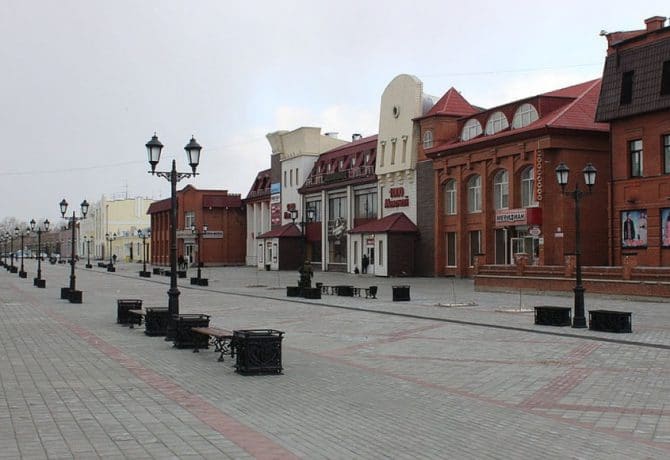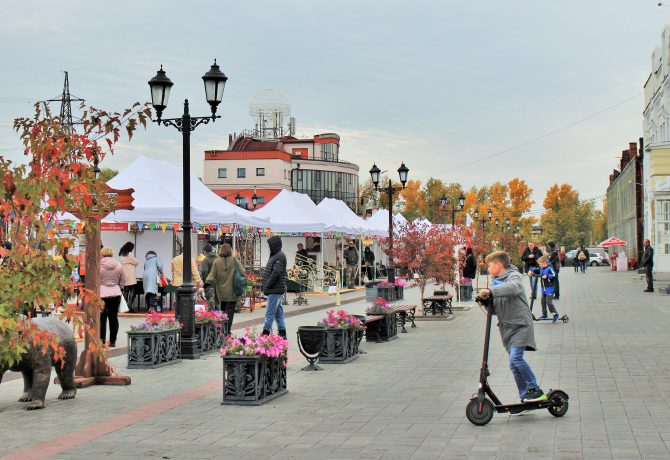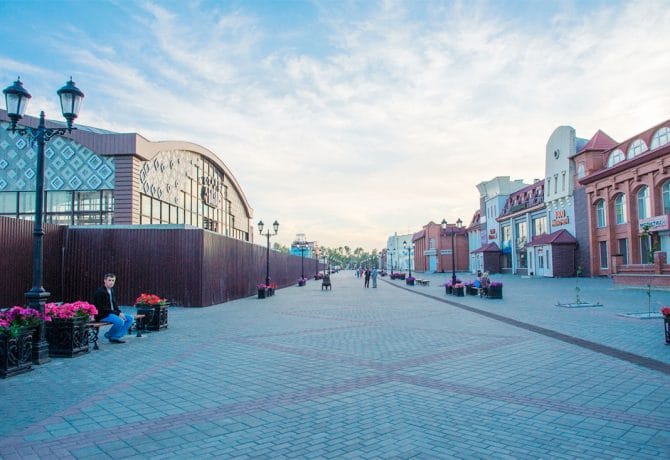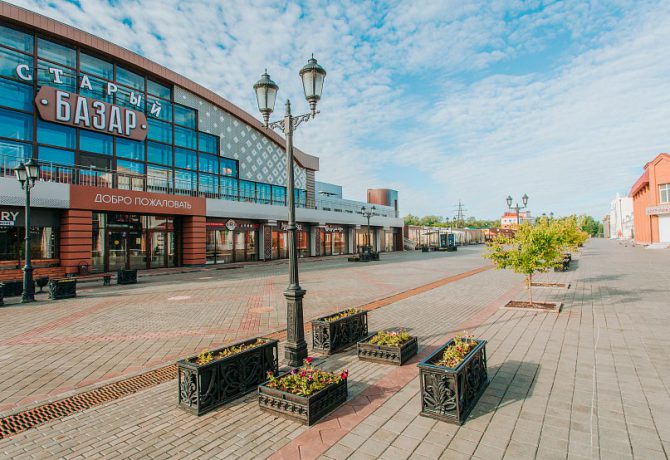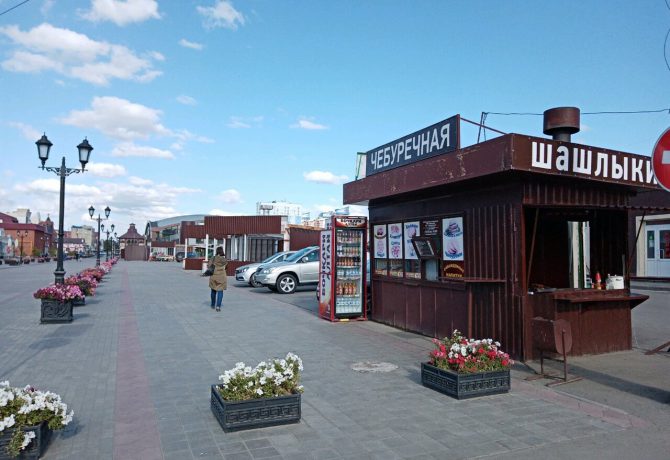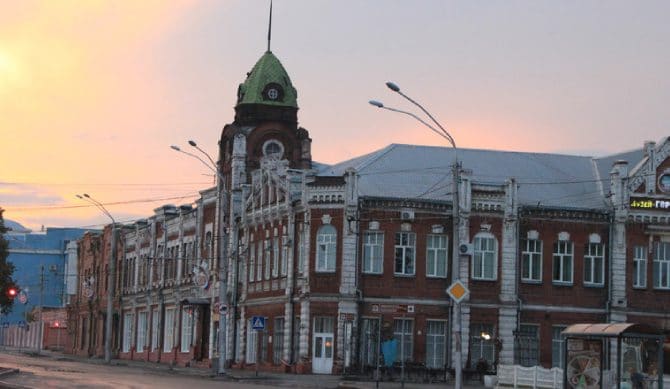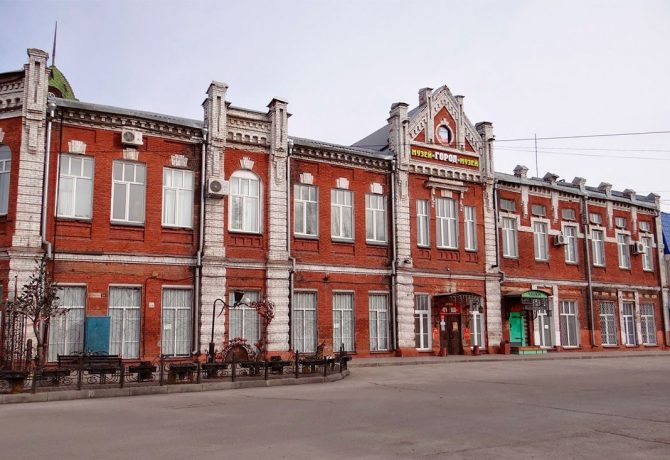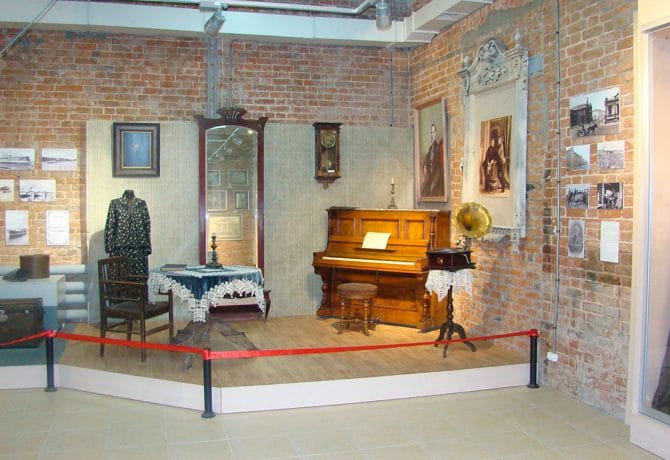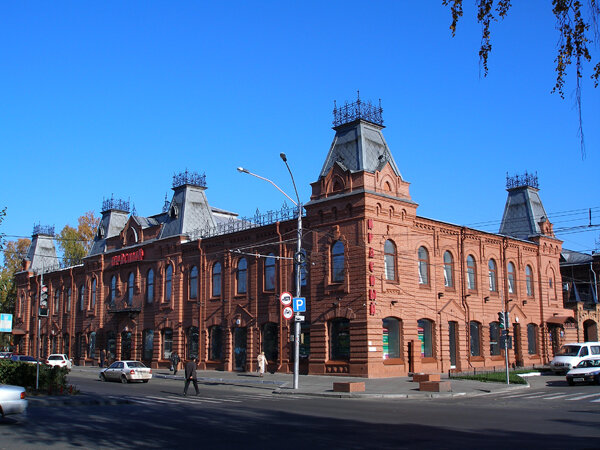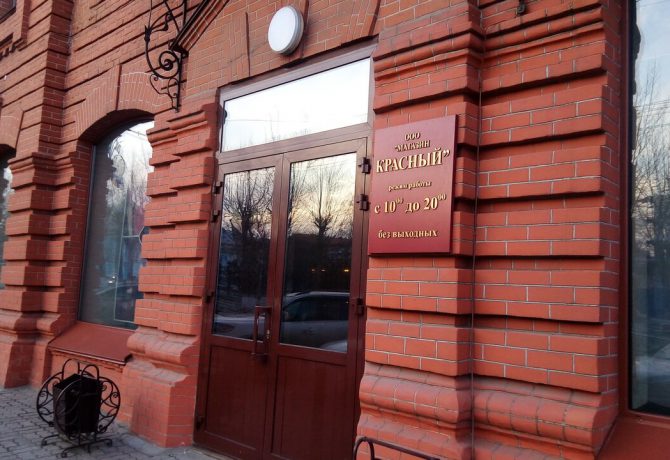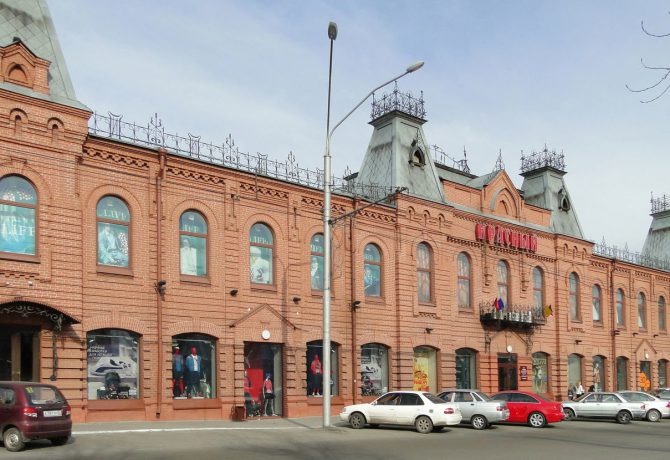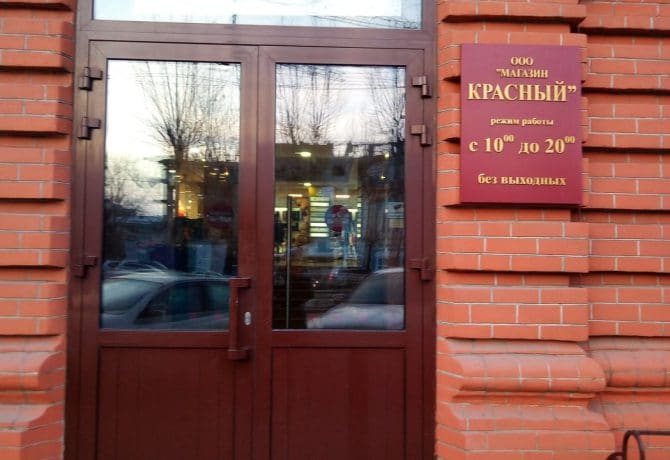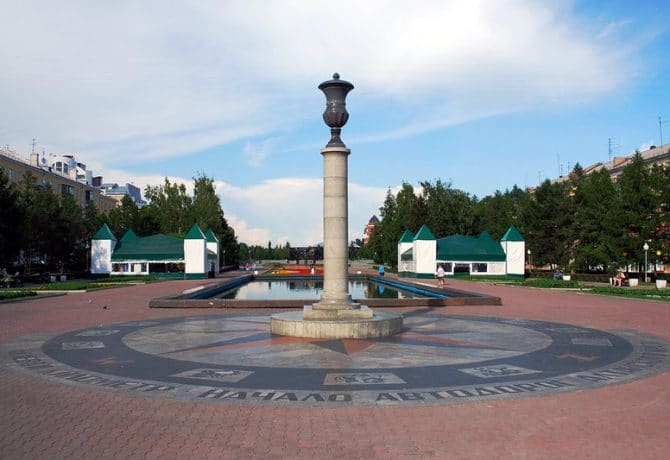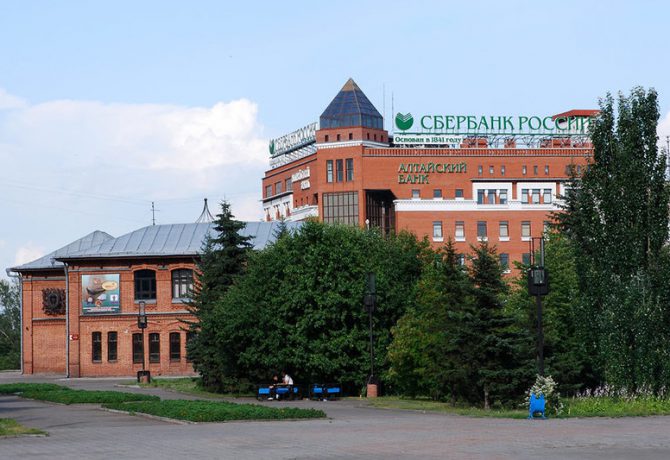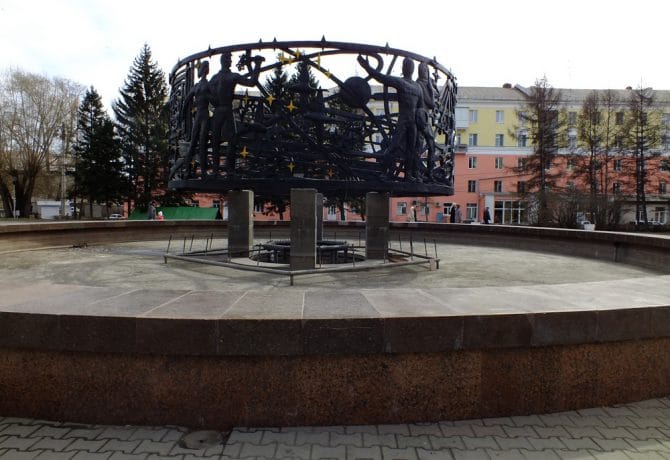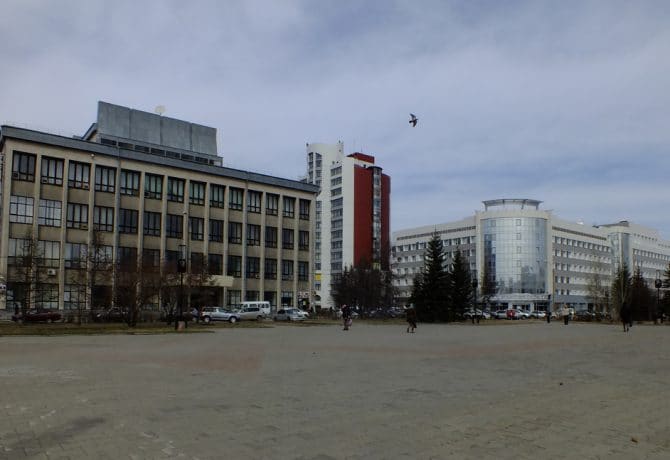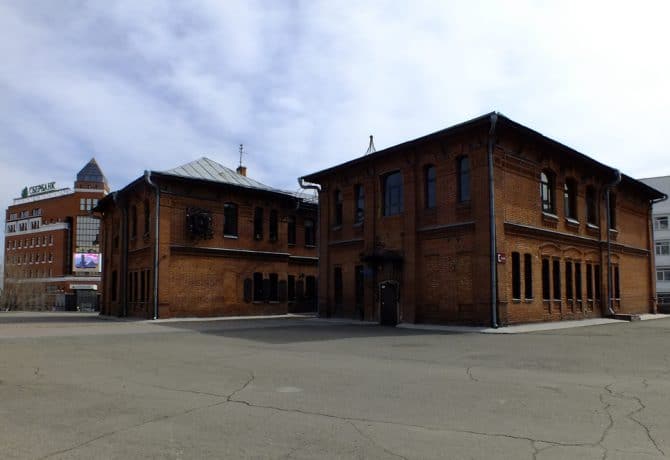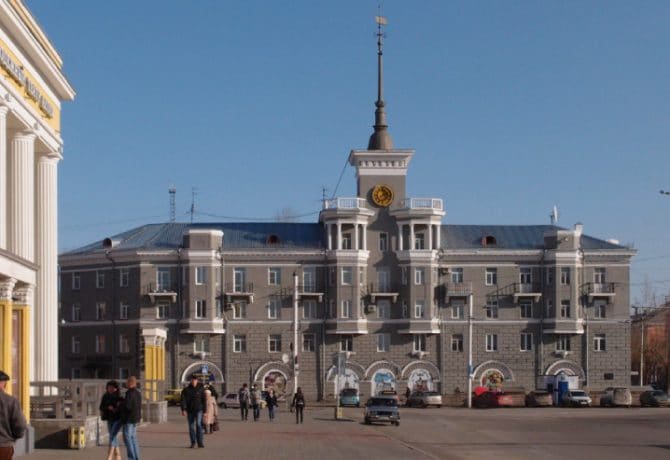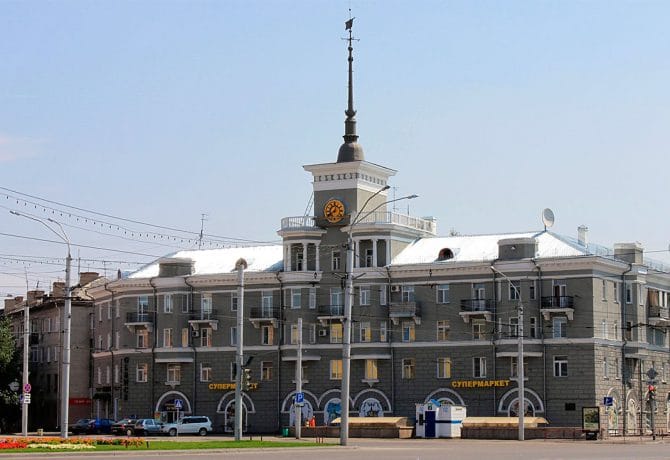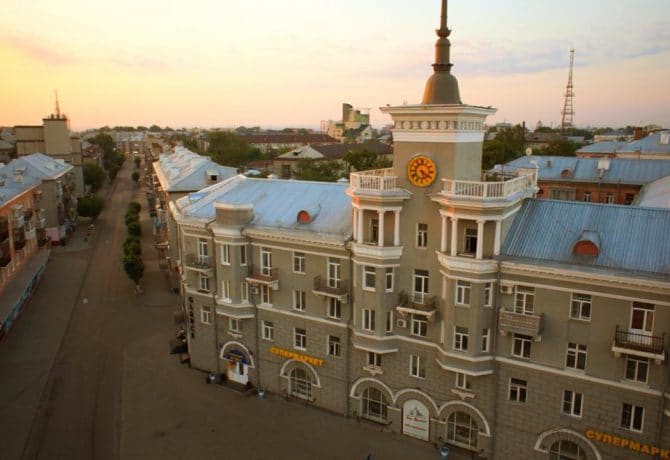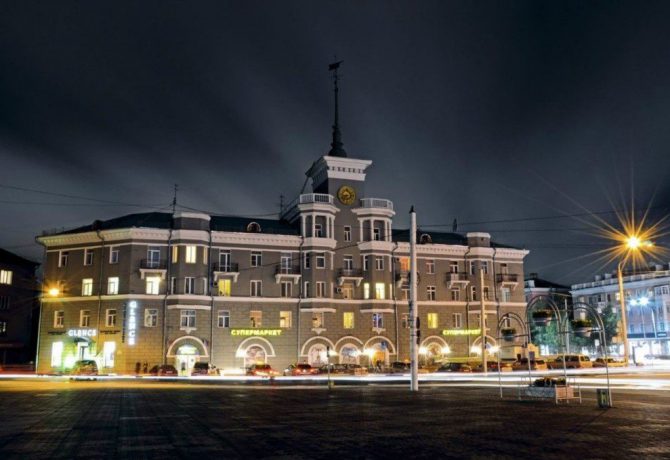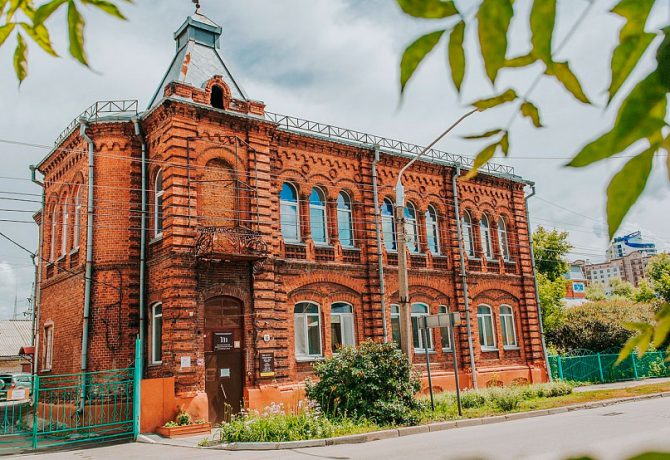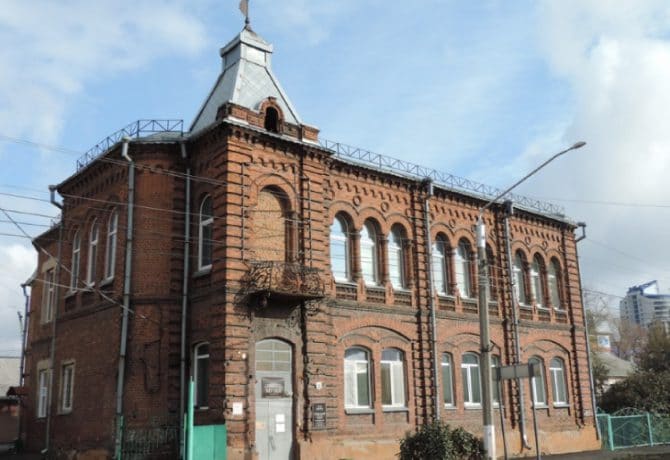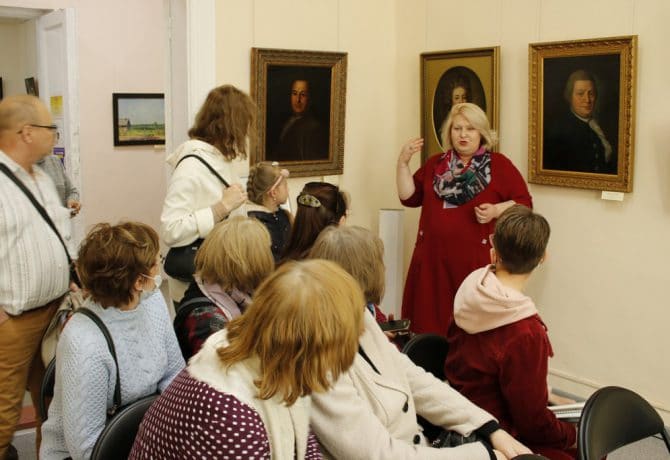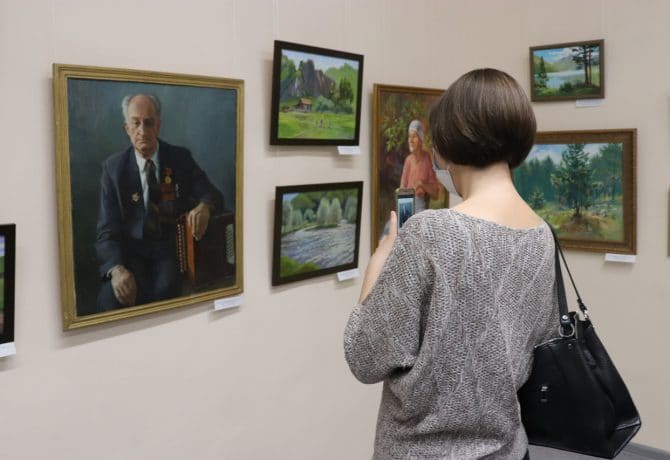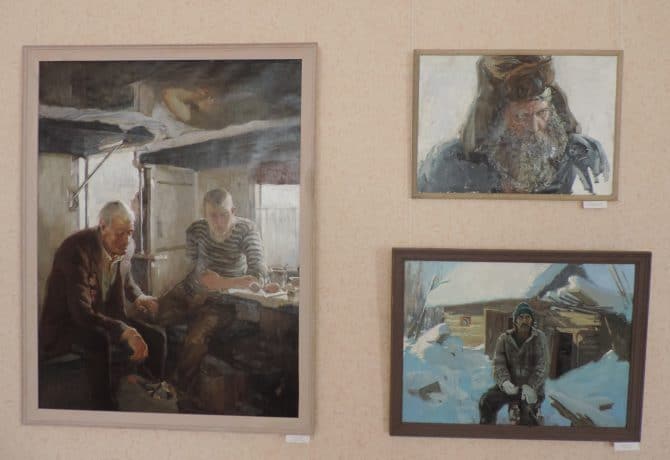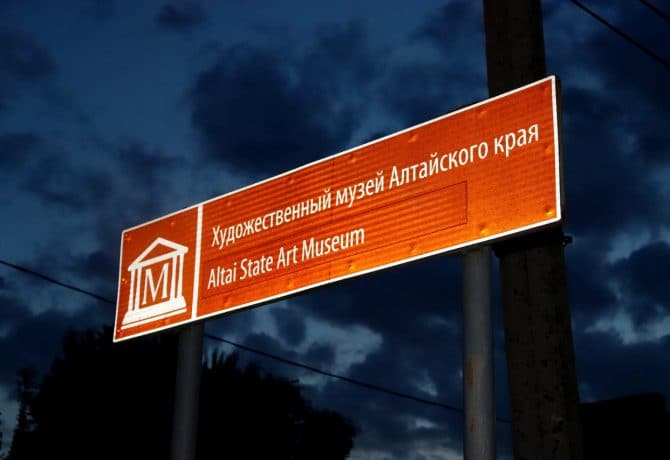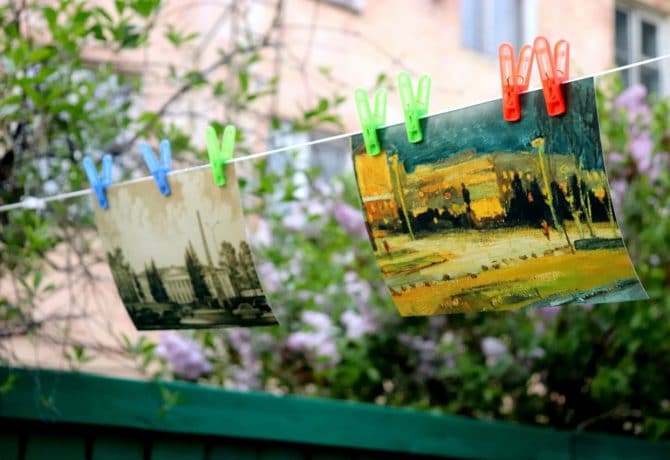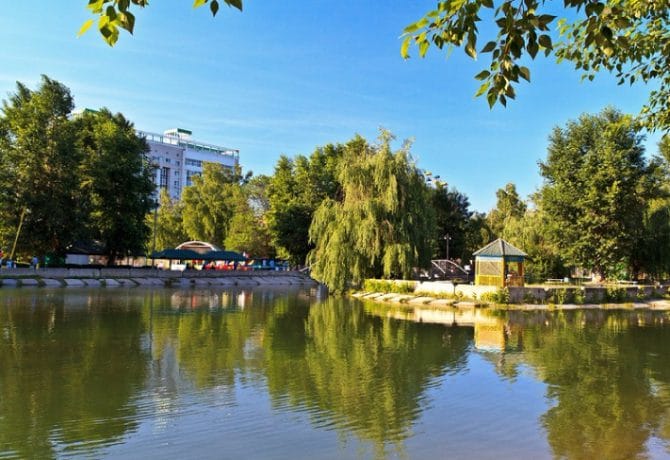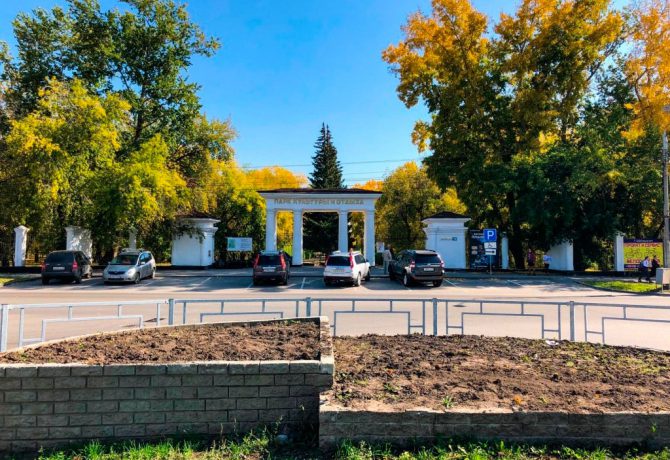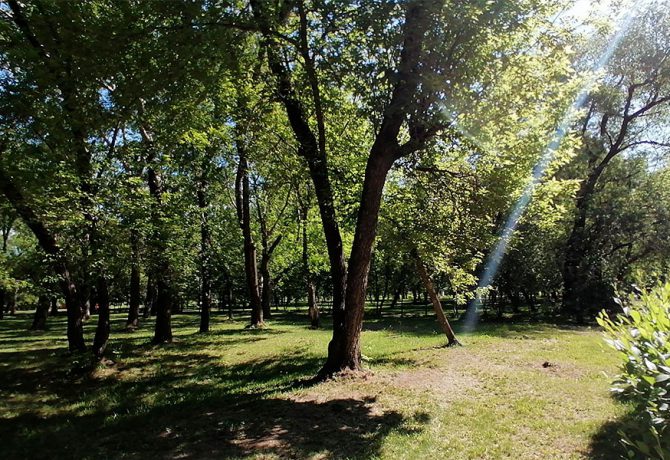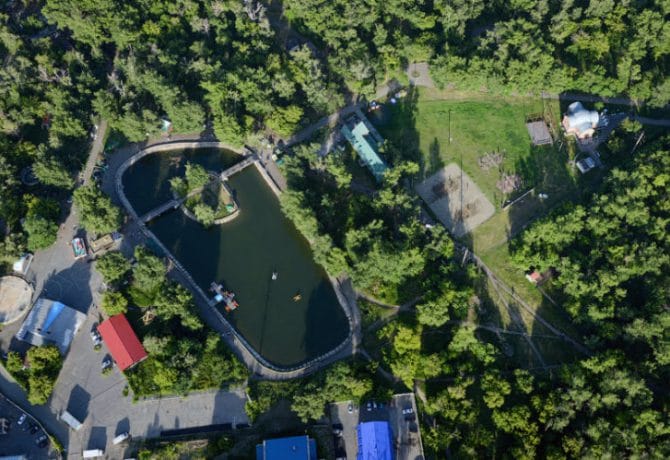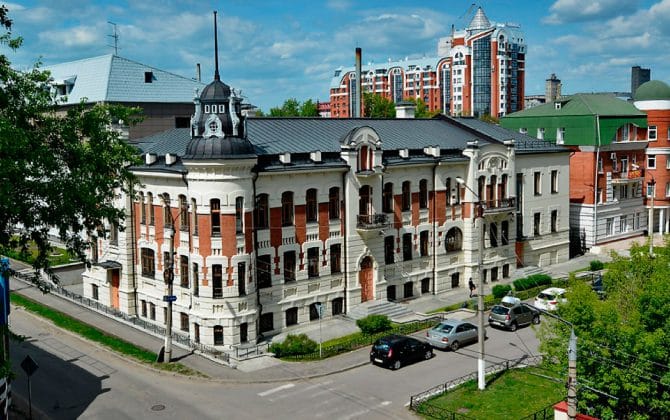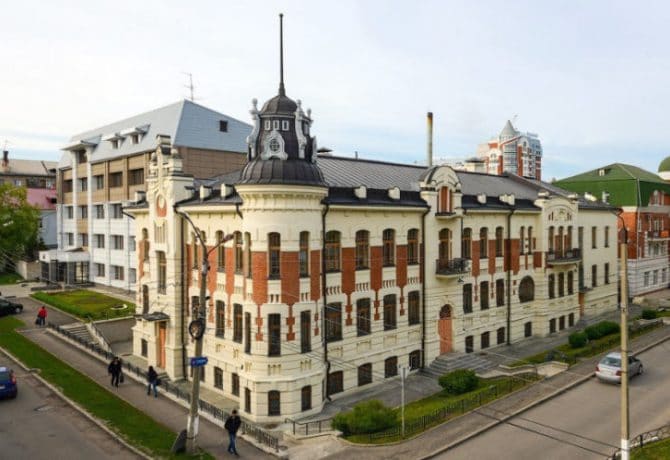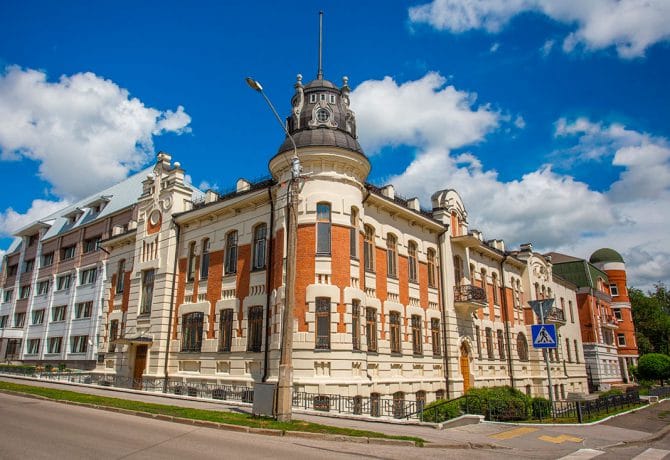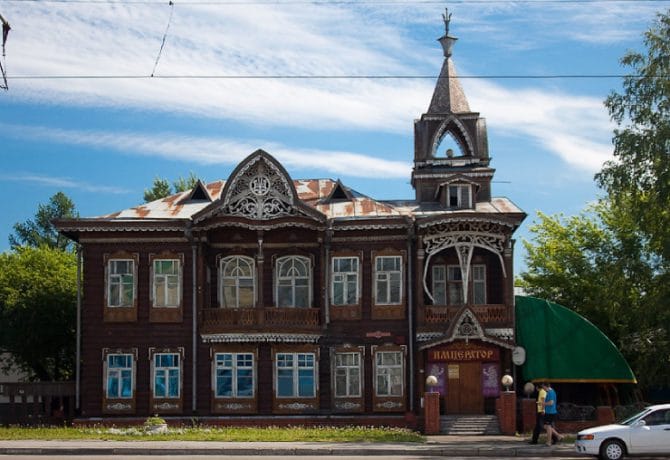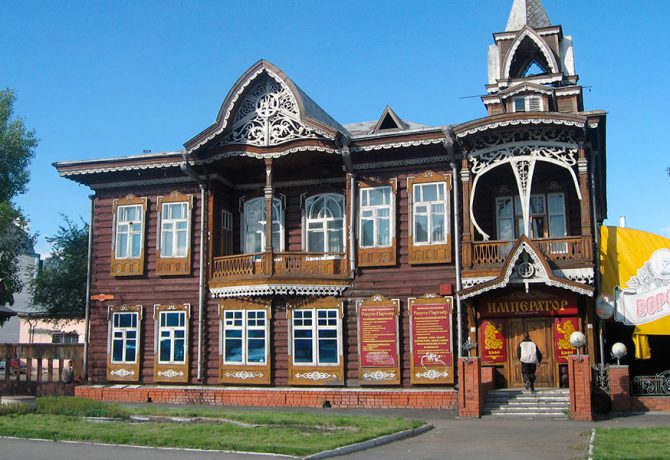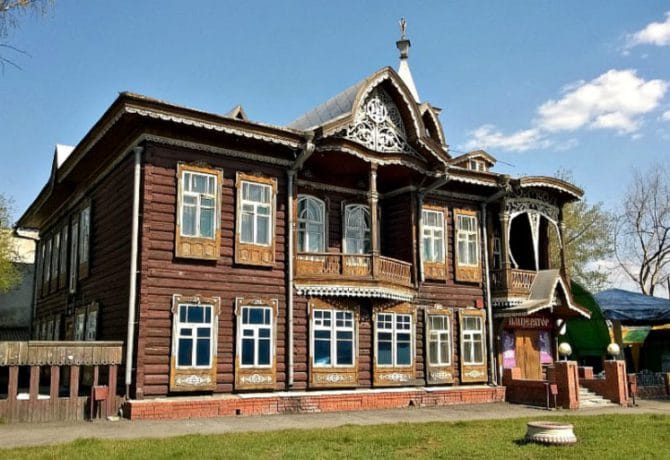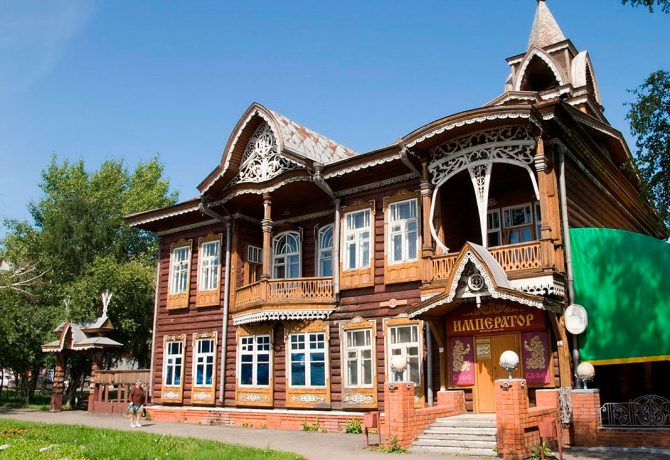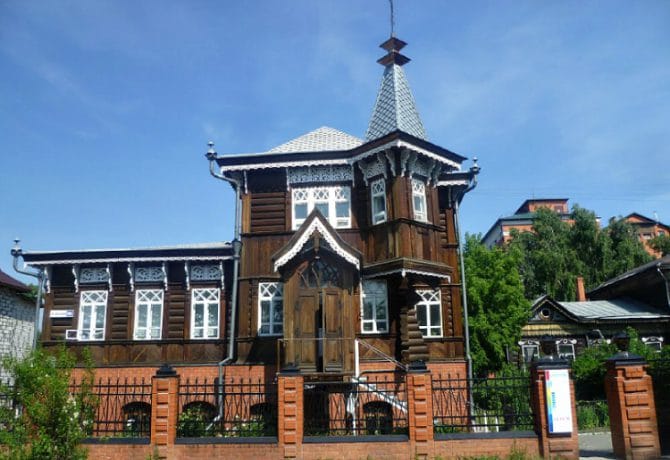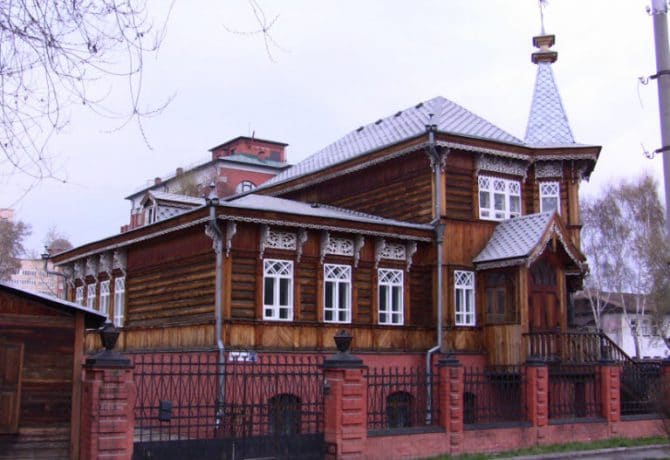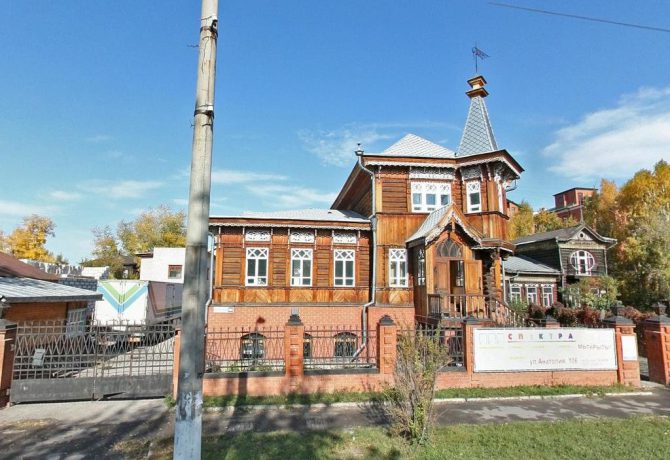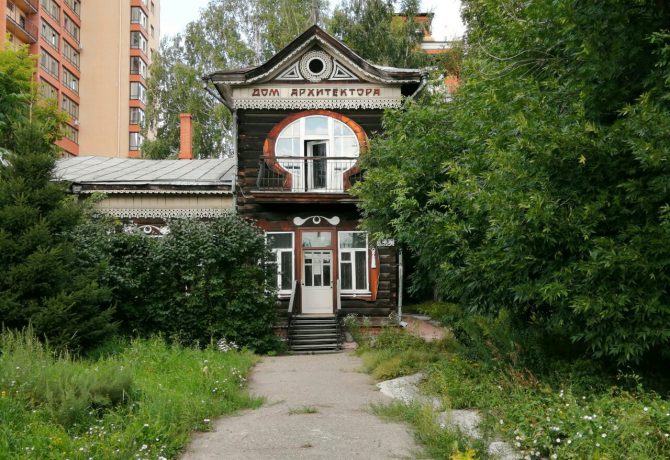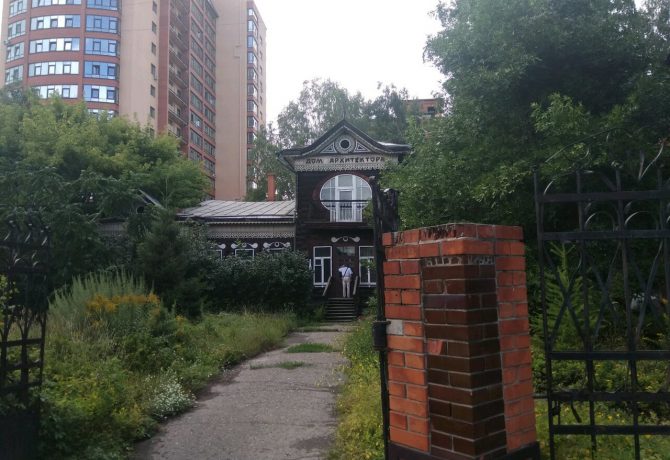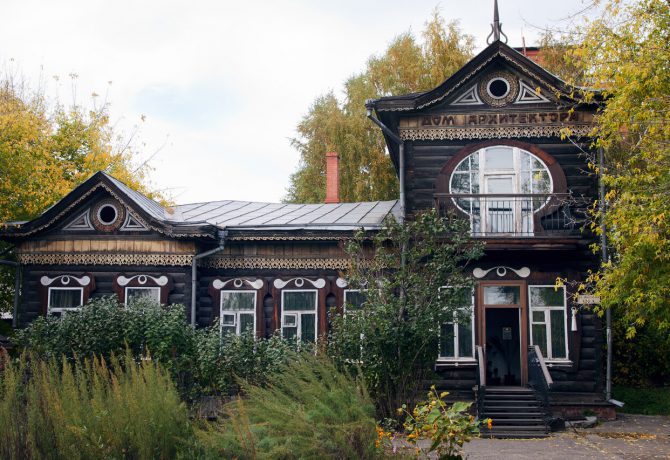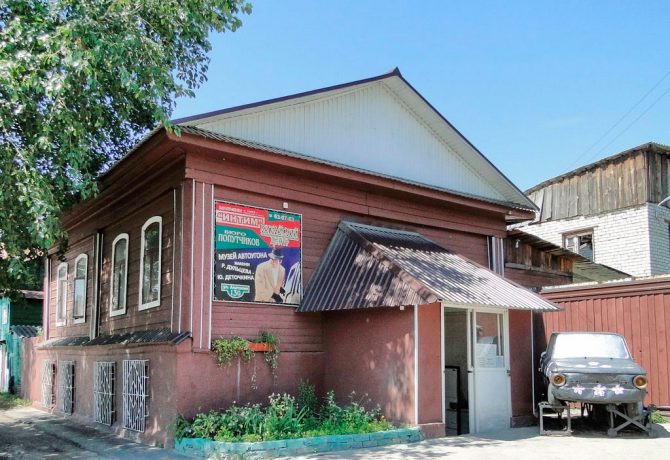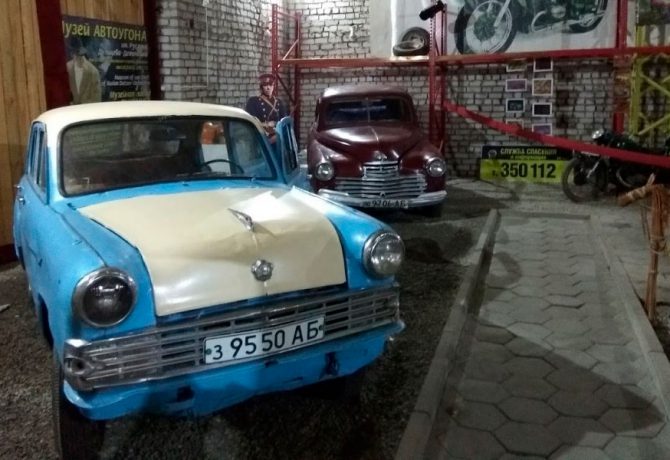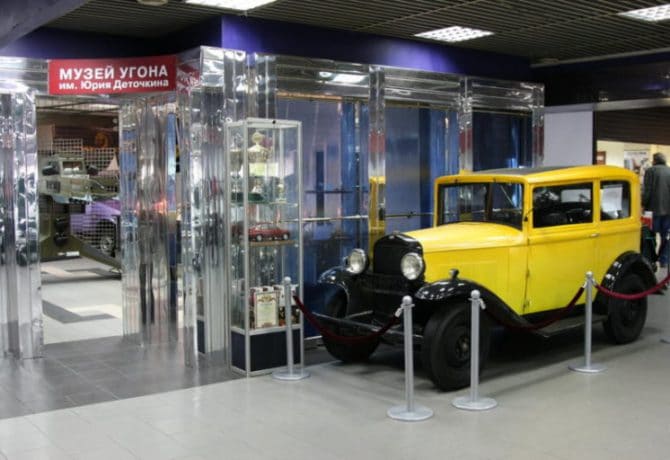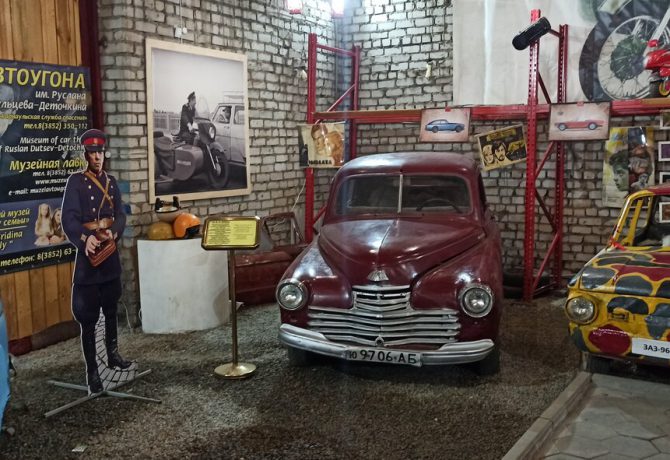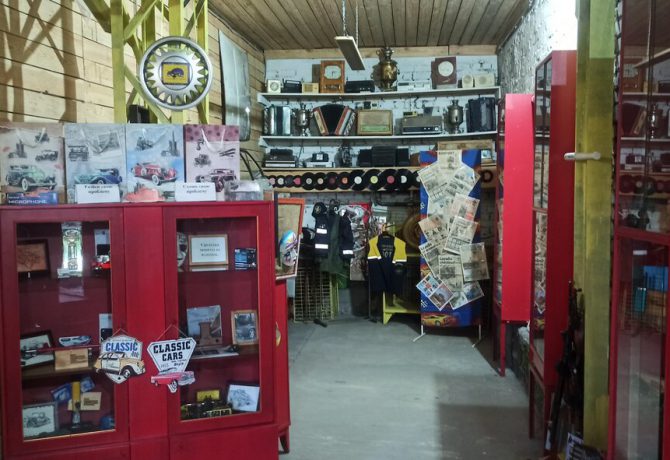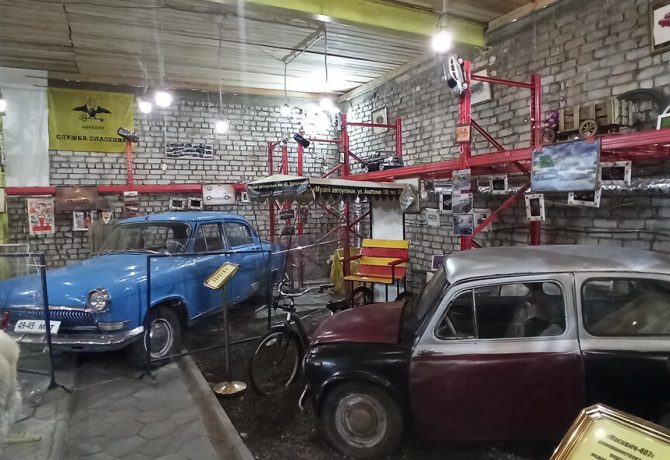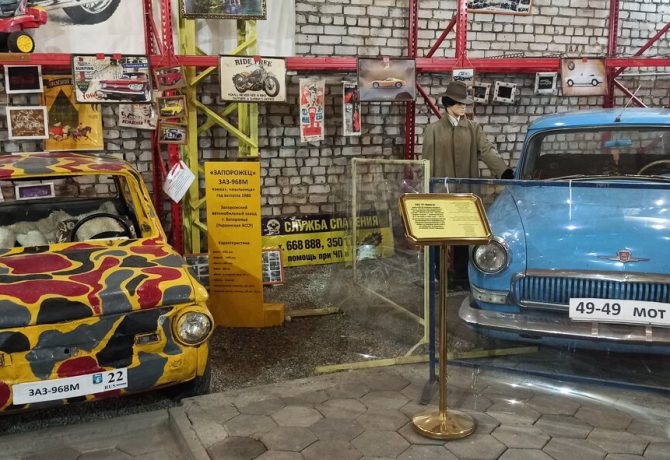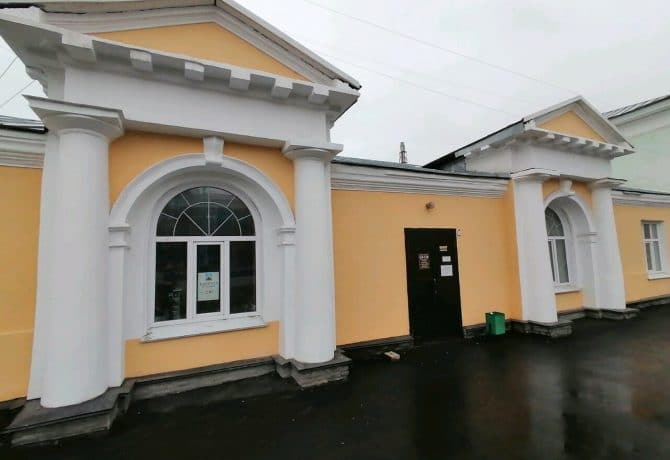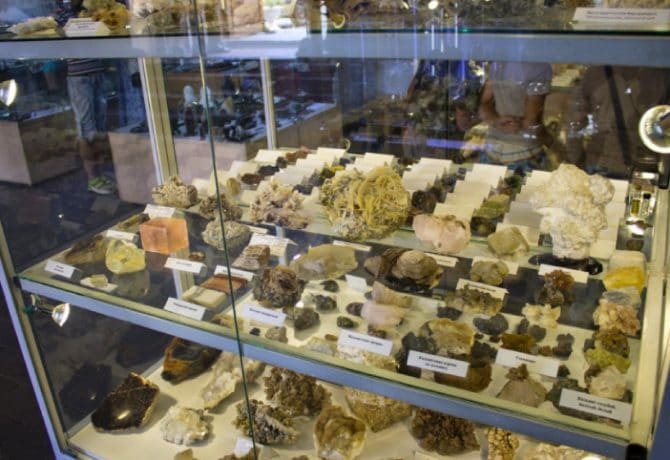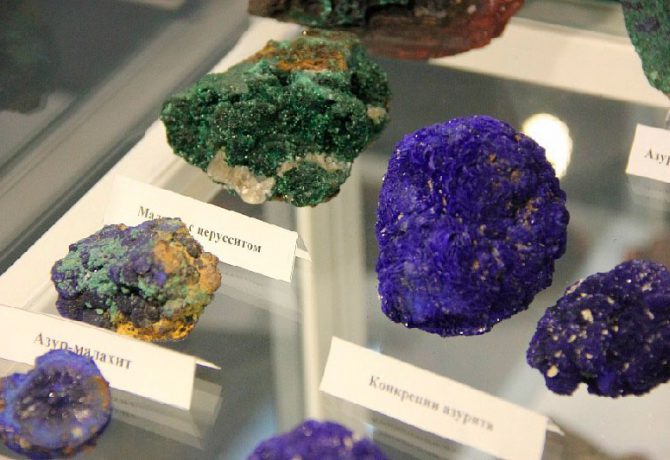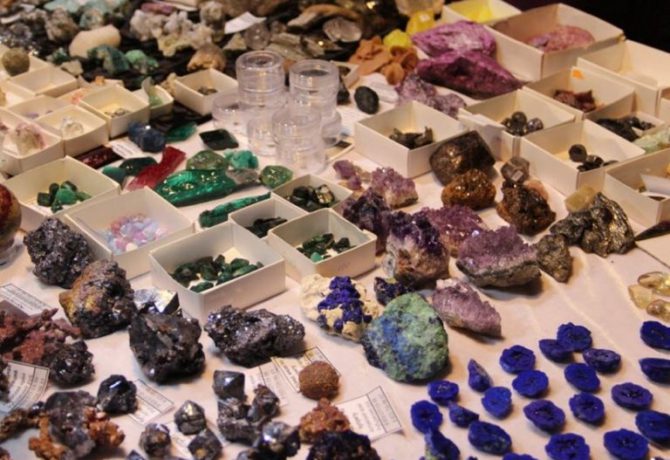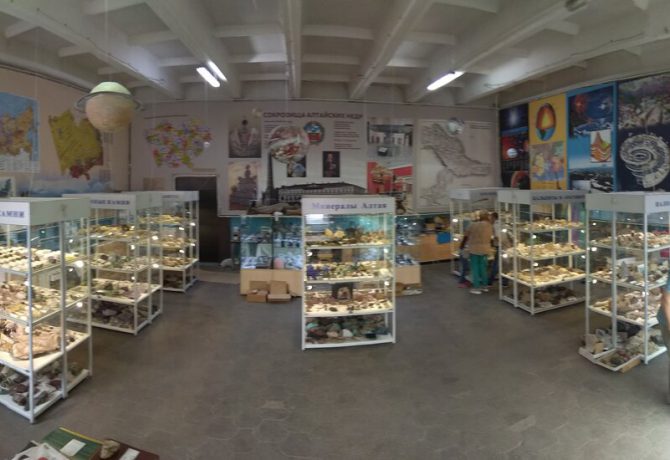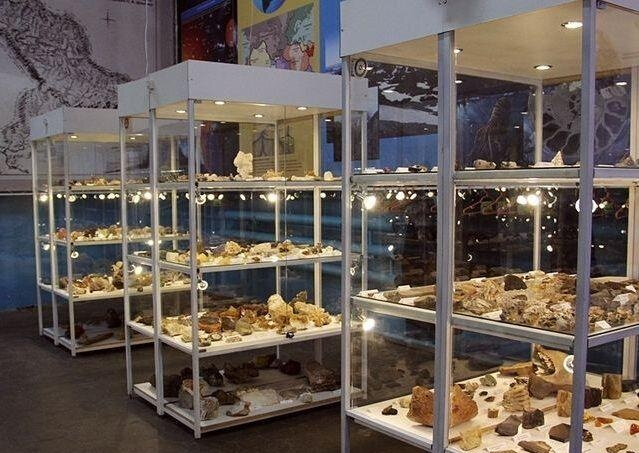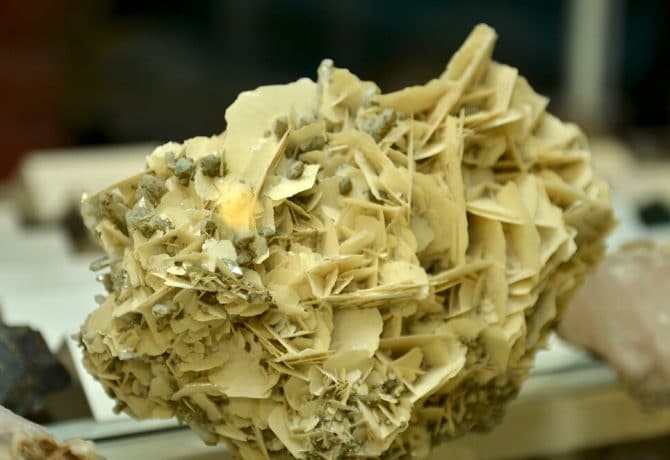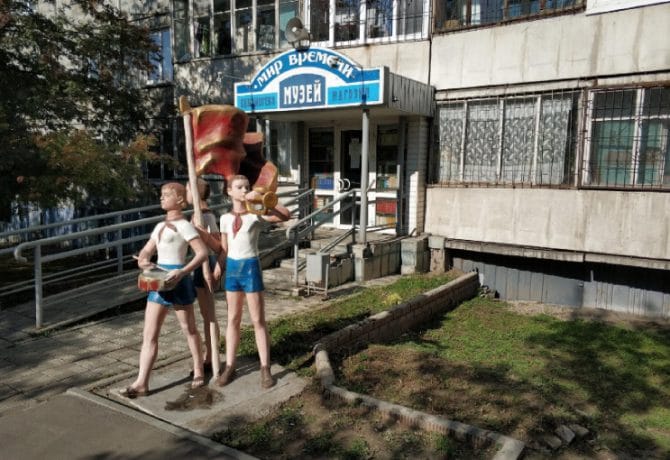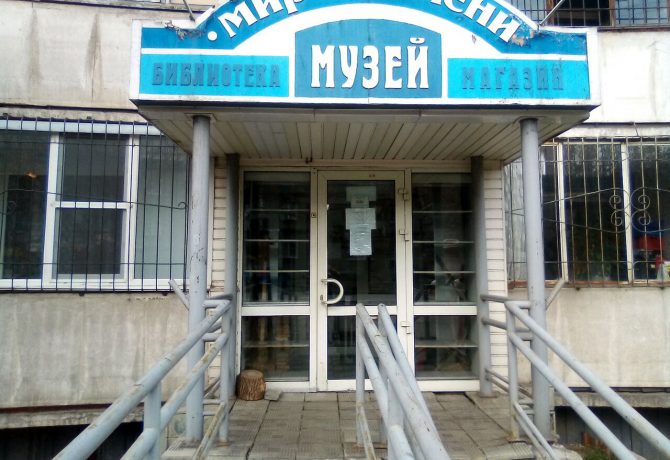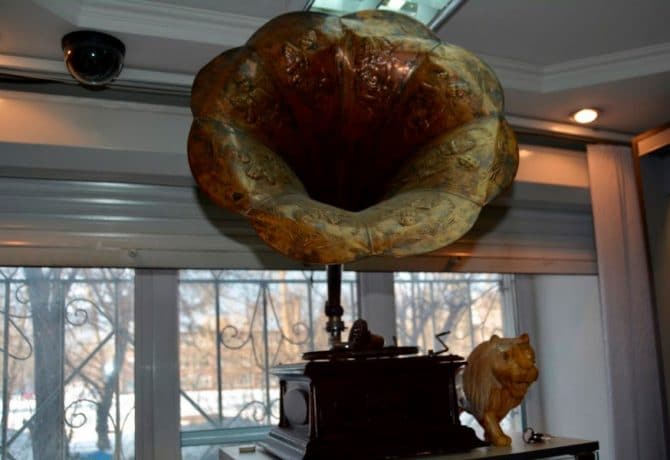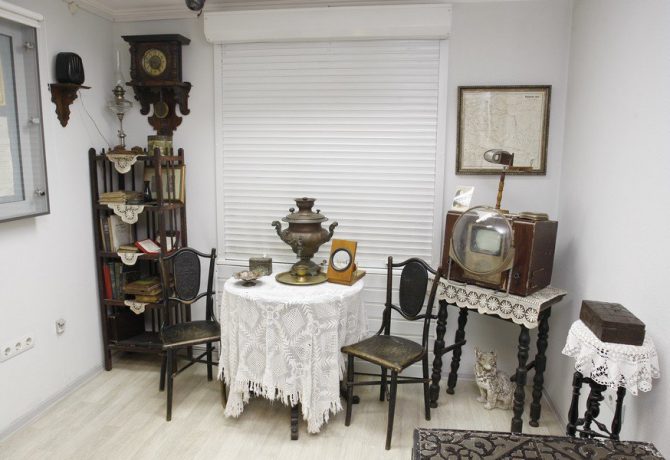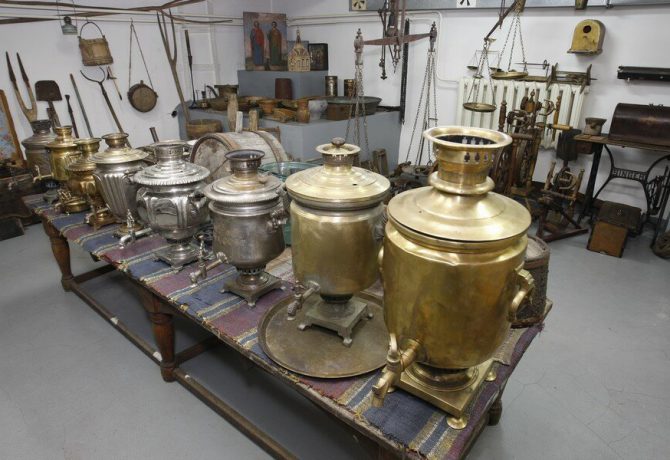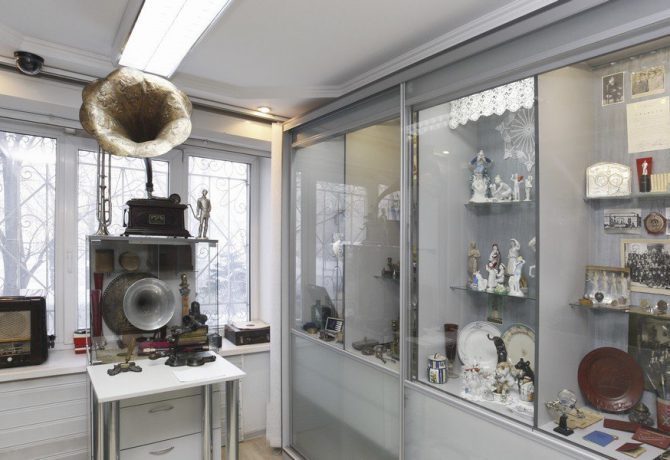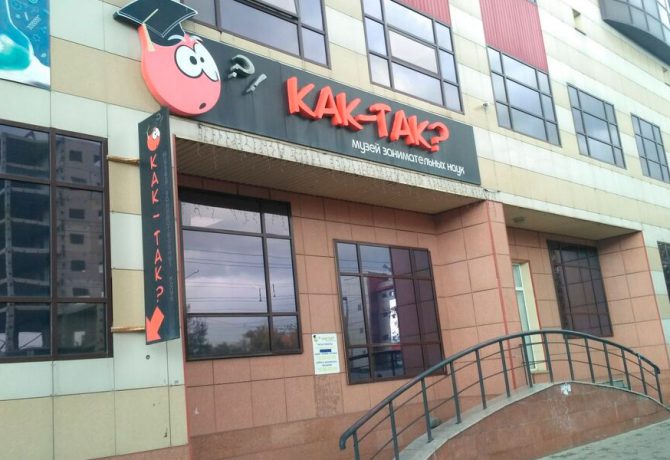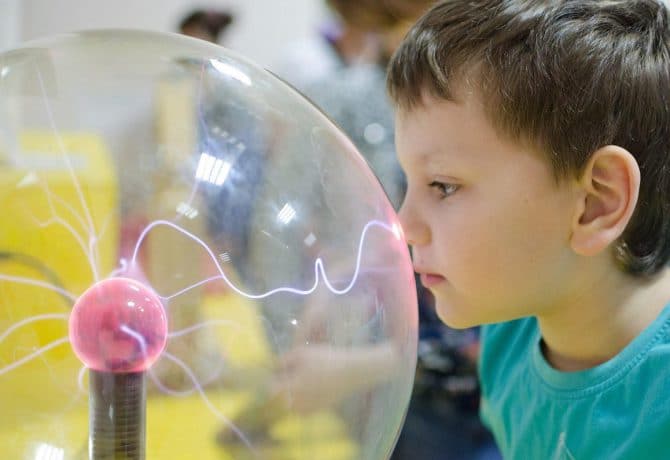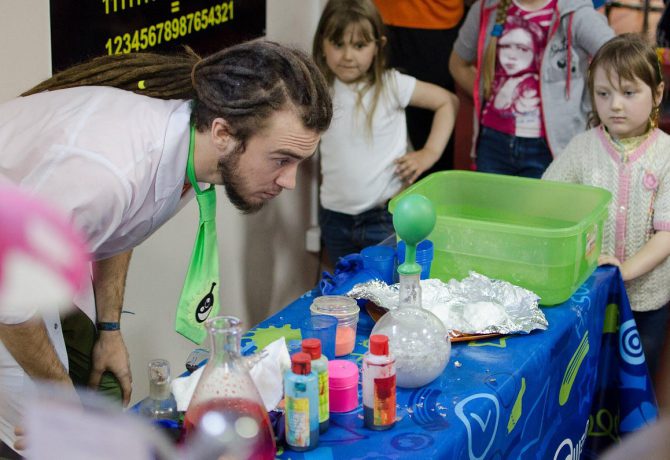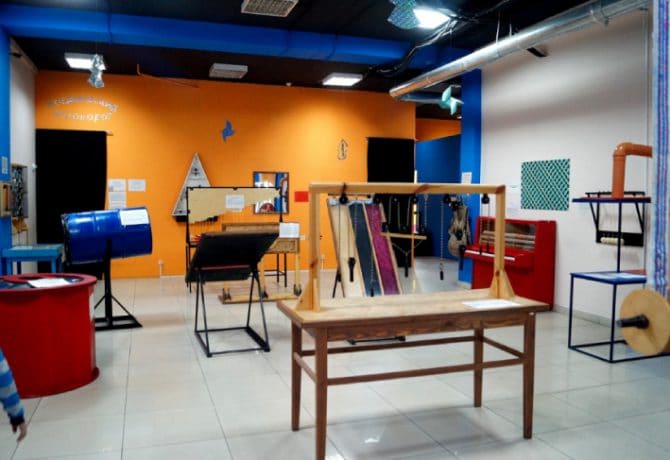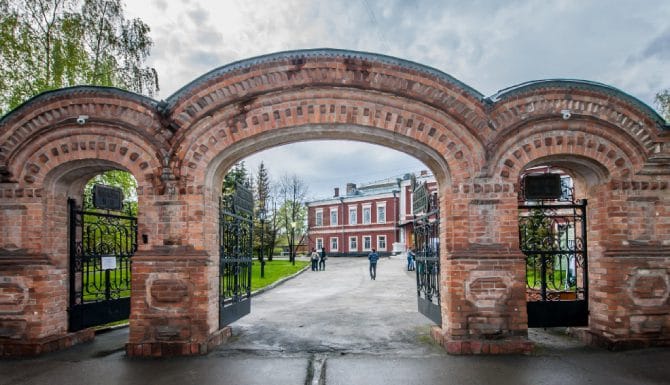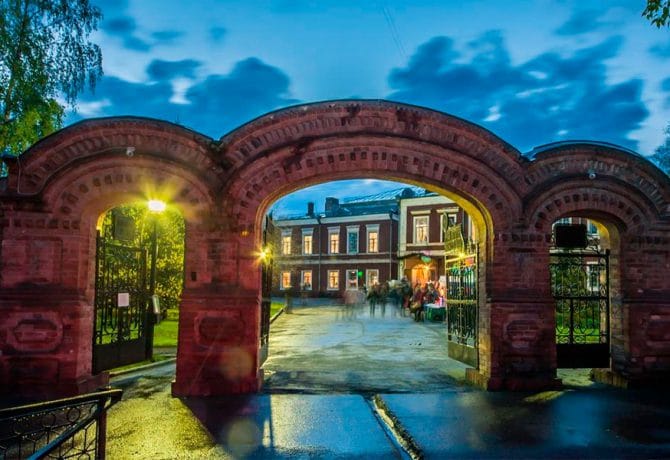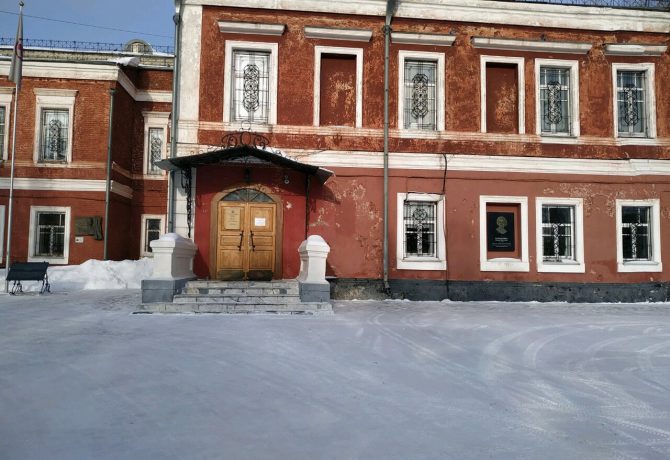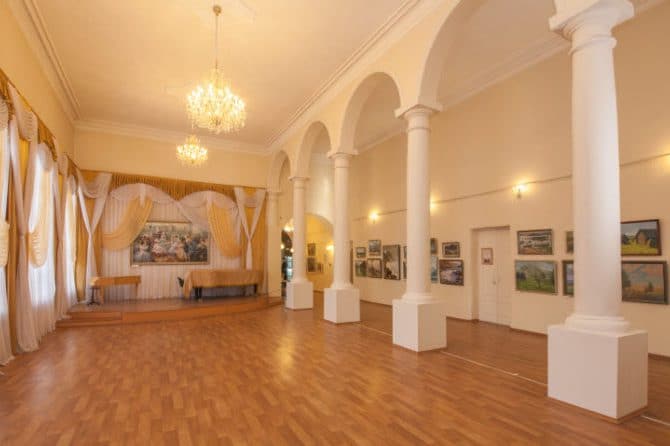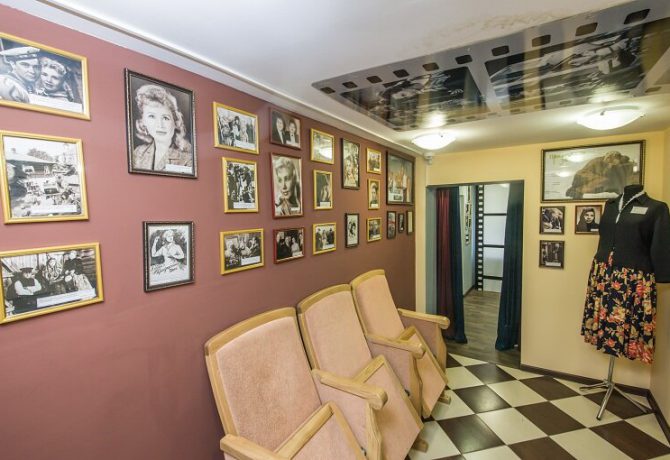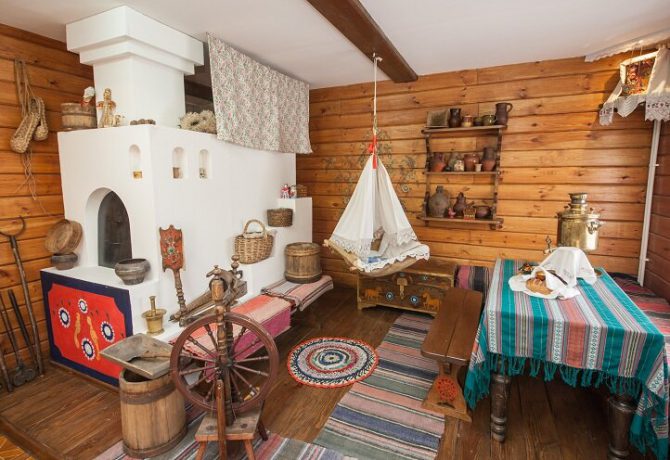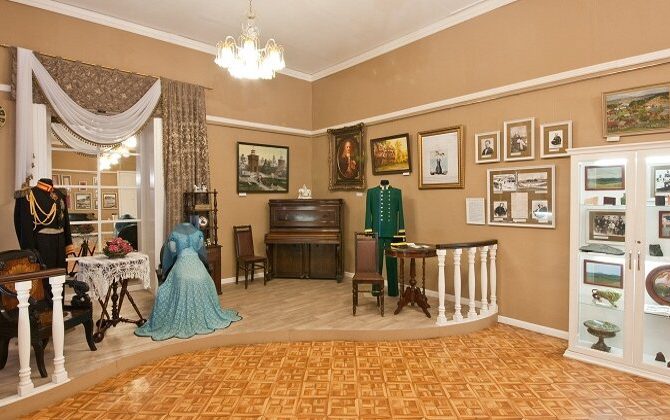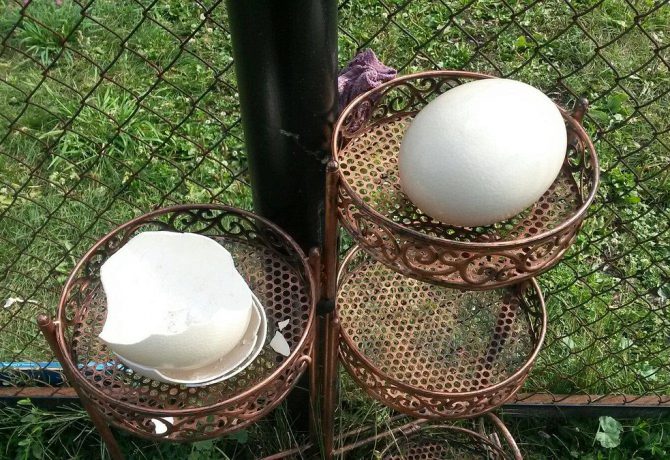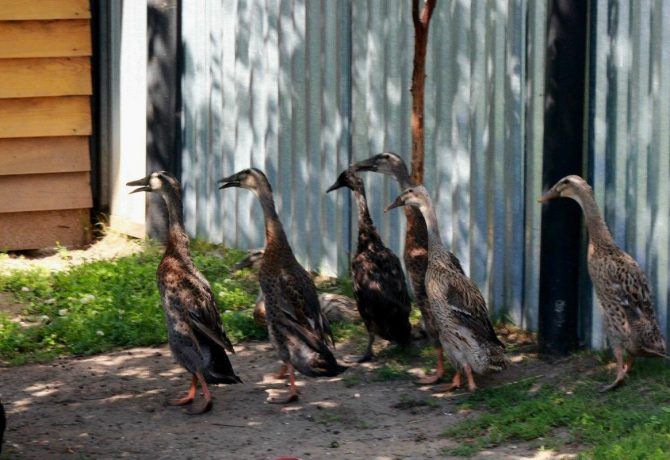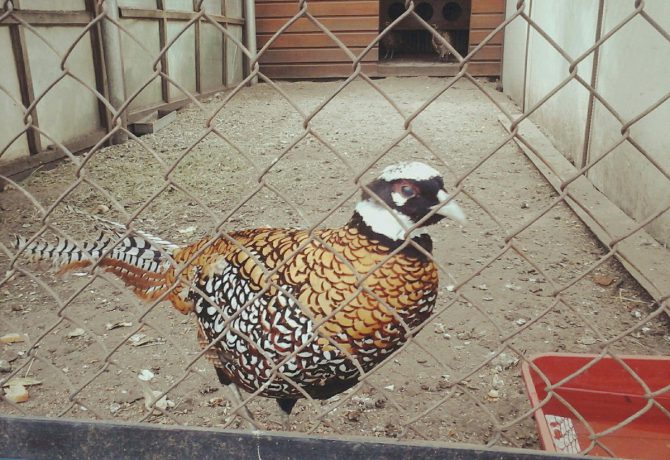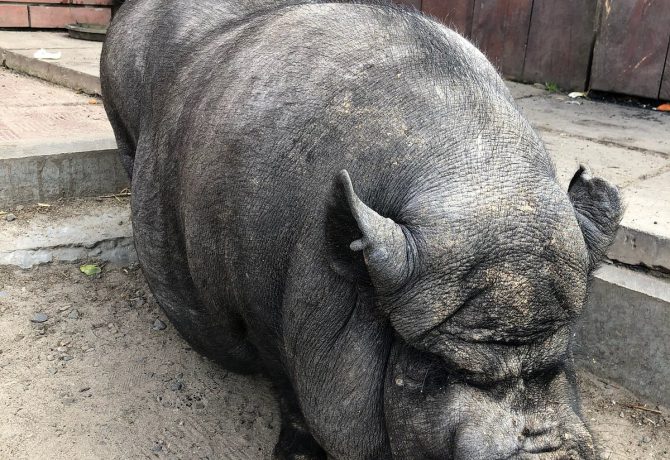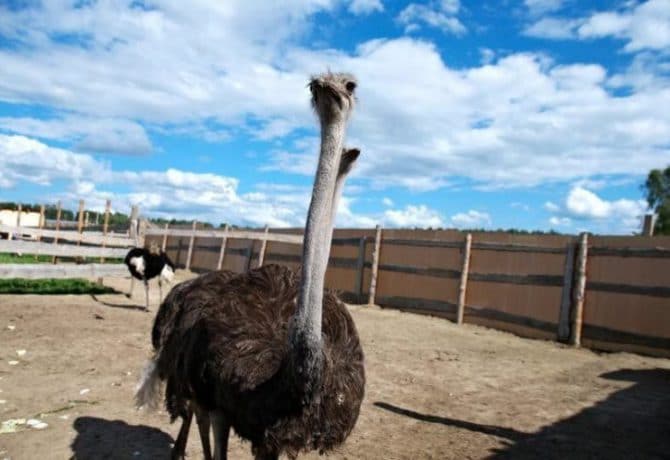Barnaul is a truly amazing Siberian city, the attention to which is increasing every year. The reason for this is its location (the left bank of the Ob River) and the presence of many different attractions. The city has a 300-year history. In September 1937, Barnaul became the capital of the Altai Territory. It was here that the first in Siberia were built:
- boulevard;
- pharmacy and medical school;
- the first monument to Viktor Tsoi in Russia.
During the Great Patriotic War, many Russian factories evacuated from the European part of the country found refuge here. It was they who supplied the front with weapons and ammunition. Barnaul became the main supplier of cartridges and bullets. In the 50s, the city became the center of virgin land development.
Modern Barnaul is famous for its museums, libraries, recreation parks, theaters, art galleries, temples, bridges, tourist complexes and recreation centers. There is a library for visually impaired and blind visitors. Despite the natural disasters (flood, earthquake, major fire), revolution, war Barnaul developed, grew and became a beautiful city with a developed infrastructure and a population of over 650,000. It offers tourists the airport, railway, bus station, highways connecting the city with all corners of the country and the Altai Territory.
Barnaul is rightly called the city of festivals. Thousands of guests visit the famous “Barnaul Spring”, “Cheese Festival”, “Museum Night” and other events held in the city at different times of the year.
Day 1
- 1 Pokrovsky Cathedral
- 2 Museum-Theater “Mountain Pharmacy”
- 3 Altai State Museum of Local Lore
- 4 Demidovskaya Square
- 5 River station
- 6 Upland Park
- 7 Ob Embankment
- 8 Znamensky Monastery
- 9 Pedestrian street Malo-Tobolskaya
- 10 City Hall Building
- 11 Shop «Krasny»
- 12 Veterans Square
- 13 House under the spire
- 14 Art Museum of Altai Krai
- 15 “Emerald” Park
- 16 House of Yakovlev and Polyakov
- 17 House of Merchants Shadrin
- 18 Nosovich House
- 19 Architect’s House
- 20 Museum of auto-thring. Yuri Detochkin
- 21 Museum “World of Stone”
- 22 Museum “World of Time”
- 23 Museum of Entertaining Sciences “How-so?!”
- 24 GMILICA
- 25 Ostrich Ranch (Vlasiha)
- 26 Attractions Barnaul on map
Pokrovsky Cathedral
One of the oldest city temples, which is more than 110 years old. The history of the cathedral is quite interesting. It was built on the site of an old wooden church at the expense of parishioners of a rather poor settlement. The cathedral was built in a short time, spending only 6 years on it. Lighting was produced in 1904. The project was made in the neo-Byzantine style. The material that was used in the construction is red brick. The temple is located in the west of the old city and impresses with its grandeur and interior decoration. For painting, oil paints were used, which were applied to dry plaster. The temple survived the time when such structures were destroyed, looted or turned into warehouses. He received a new life in the late 40s, when its restoration began. For many years it was the only cathedral where Christians could come to pray, baptize their children or order a prayer service. At the temple for many years there was a parochial school, it taught everyone to receive education for free. Now it is an active temple, it holds regular divine services here. On the official website you can find out more about the opening hours and services provided.
Address: Nikitina str., 147
Official site: https://pokrov22.ru/
Museum-Theater “Mountain Pharmacy”
The architectural monument of the XVIII century belongs to the objects of federal significance. It housed the first pharmacy in the Altai Territory, which provided residents of nearby and remote areas with pharmaceutical products. The building was built of stone and was the second built of this material. From 2010 to 2012, on the initiative of the research and production company “Altai Bouquet”, the museum was restored and began to receive tourists from all over the world. About 700 visitors come here per month.
In the museum-theater get acquainted with the history of pharmacy business. Unique exhibits presented in the museum halls, relating to the XVIII and XIX centuries, will tell about the masters-pharmacists, will acquaint with the production of medicines, will take visitors to the XVIII century and tell about modern Barnaul and the history of its development.
The museum has an exhibition hall, in which not only get acquainted with the products of Altai masters, but also acquire it. Here they visit the restaurant and taste Siberian cuisine: dumplings, pies, all kinds of fruit drinks, pickles, tinctures.
The museum is private and is ready to receive visitors from 10.00 to 24.00. Cost of attendance; 50 – 500 rubles.
Address: Polzunova str., 42
Altai State Museum of Local Lore
The museum belongs to the oldest sights not only of Barnaul, but also of the entire Altai Territory. Year of foundation – 1823. The initiator of the creation was the head of the district of Kolyvano-Voskresensky plants and the Tomsk civil governor P.K. Frolov, as well as a doctor, researcher Altai F.V. Gebler.
The museum impresses with its unique funds. More than 200 thousand exhibits are in the halls and vaults of the museum of local lore. The most valuable is the historical and technical collection. It is represented by authentic materials of the XVIII-XIX centuries and tells about the mining production of Altai. Steam-oil machine, pharmacy bowl, sets of coins for the manufacture of copper coins – this is only a small list of exhibits of all-Russian significance.
Attract the attention of other, no less valuable collections. These include:
- archaeological;
- stone sculptures of the Turkic period;
- mineralogical;
- Ethnographic
In the museum you can find the remains of meteorites, rare unique books, antiquities. The museum presents different programs, thematic, sightseeing tours. The price is from 30 to 100 rubles. Opening hours from 11.00 to 19.00.
Address: 46, Polzunova str.
Official site: http://www.agkm.ru
Demidovskaya Square
The square is made in the classical style and got its name in honor of A. Demidov. He was the founder of the mining industry. It was his portrait that was placed on the 14-meter monument that decorated the square. It is called the Demidov pillar, it was built for the 100th anniversary of the altai mining production. Now the cast-iron bas-relief with the image of Demidov was removed and stored in the local history museum of Barnaul. Now the pillar refers to monuments of federal significance, which are protected by the state. The stele consists of 12 blocks, which were carved and processed in the village of Vedovskaya Kolyvan parish. Then on the river on rafts they were delivered to the capital. The attraction itself stands on 4 cast-iron supports lying on a granite pedestal.
Around the pillar there is a square. Locals believe in the legend: if you go around the pillar three times clockwise, throwing coins, and make a wish, then it will definitely come true. Initially, the oldest square of the capital was called Konyushennaya. Subsequently, it was renamed several times, but, despite everything, it remains a favorite vacation spot for citizens and guests of the capital. There are festive events of city and regional significance, festivals, concerts.
The landmark was designed by famous architects, the ensemble of the square was formed over 30 years. Around are the buildings of the Mining School, the Mining Hospital, a shelter for the disabled, which have retained their original appearance and amaze with their monumental appearance. In the center there is a square with recreation areas.
Address: Krasnoarmeysky Ave.
River station
The river station of the capital is clearly visible from the new bridge. It is located on the banks of the Ob river near the mouth of Barnaulka. The modern building appeared in 1985, the river station originates from the XIX century. Many merchant and passenger ships moored to the river banks, bringing goods to the city and giving travelers minutes of pleasure during walks. And today, passenger ships transport everyone around the city and suburbs. Less often, the station began to receive cargo ships. Ships depart from the river station at different times of the day. Fans of evening and night travel are given this opportunity. Nearby there is a recreation area where you can relax with the whole family.
Upland Park
In order to visit the upland park, you need to go to the southern part of the city. The attraction is located on a hill, the height of which is 175 meters above sea level. For comparison: the central part of the city, adjacent to the park, has a height of 137-150 m. The park has an amazing history. The first settlers of the future Barnaul planned to create a defensive structure in the form of a fortress on this place. When the need for this disappeared, the territory became a cemetery. Many simple and noble people found eternal peace here. In 1930, the cemetery ceased to exist, the surviving graves were finally destroyed and a park of culture and recreation was created on this territory. During the war period, the place was given to evacuated enterprises. In the postwar period, the park was restored and for a long time the Altai VDNKh was located here. The exhibition ceased to exist with the collapse of the USSR.
Today the park receives guests, monuments and pavilions have been preserved on its territory, which require restoration work. This is a place of peace and quiet, spread out among natural and cultural green spaces. Here they walk, relax from the hustle and bustle of the city. Attractive staircase, which allows you to get to different levels, from the terraces to admire the city and the Ob, sit in a cozy café. It has 260 steps and 5 terraces. At night, the stairs are illuminated and become especially attractive. The completion of the walk along the stairs will be seven-meter three-dimensional letters BARNAUL, which have beautiful lighting and serve as a place for original photos and selfies. Also on the territory of the park there is a white six-meter cross and the temple of John the Baptist was built.
Address: Barnaul, Mamontova str.
Ob Embankment
By stairs, vacationers go down to the embankment, which belongs to the modern sights of Barnaul. Despite the fact that it was put into operation only in 2018, the embankment managed to gain popularity among local residents and guests of the capital. The half-kilometer recreation area has a modern design, benches and shade canopies are installed here. The walking area is illuminated by lanterns, and its flowerpots are decorated. Elegant fences with wrought iron lattices harmoniously fit into the design of the embankment, which makes up a single complex with the Nagorny Park.
Walking along the embankment, vacationers admire the urban and river regions. Here you can drink a cup of coffee or tea in a cozy café, located at the end, buy all sorts of sweets, ice cream. Numerous kiosks also offer their products.
On the embankment, artists and musicians demonstrate their art. Traditionally, school graduates come here to meet the dawn and newlyweds to celebrate a joyful event and take beautiful photos. Multi-seat electric cars, bicycles will give a good mood for children and adults.
On the territory of the embankment, city and regional events, concerts, festivals, enchanting shows are held.
Znamensky Monastery
The convent is part of the complex of the Znamensky temple, which is considered one of the oldest in Barnaul. The history of this church is interesting and tragic. Built in six years on the donations of parishioners, it had a large library, many shrines that were destroyed during the Soviet era. The archbishop who conducted divine services was arrested and shot. In 1938, the nkvd archive was located in the building, the bell tower was destroyed, the dome was broken.
And only in 1992 the restoration of the destroyed temple began, and in 1994 regular services were resumed.
On July 18, 1994, it was decided to transform the temple into a convent. The first abbess was the nun Glafira. Two years later, through the works and prayers of the first monastic sisters, the main church was restored and the limit was illuminated in honor of the icon of the Mother of God “The Sign”. The monastery was replenished with shrines. From Jerusalem, particles of the relics of the Venerable Martyr Elizabeth were delivered, the icon “Unfed Color” and the image of the Mother of God of Pochaev were donated. On May 23, 2009, the main and small domes were restored.
Now the Znamensky Convent is a shrine of the city and is open to the public from 8.00 to 18.30. It has a Sunday school and a museum.
Address: Barnaul, Bolshaya Olonskaya str., 24
Pedestrian street Malo-Tobolskaya
In large cities, as a rule, there are pedestrian streets like the Moscow Arbat. Barnaul was no exception. The function of the pedestrian zone began to perform the oldest street Malo-Tobolskaya. It was here that since 1748 street trade was held, famous trading houses were immediately located. It was opened on the City Day in honor of the 80th anniversary of the Altai Territory and became a long-awaited gift for residents and guests of Barnaul. The street has acquired a new modern look. From commercial, noisy turned into a walking and tourist.
The street was transformed thanks to the reconstruction, as a result of which historical buildings were restored, benches, storm drains, lanterns appeared. Attractiveness was added by green spaces. The place has become popular among parents with children, newlyweds, guests of the capital. On the street there are citywide holidays, concert programs. Artists, artisans, folk craftsmen exhibit their works here. Numerous outlets with outdoor verandas invite visitors to taste local cuisine and enjoy a cozy homely atmosphere. In addition to everything on the street there is a symbol of Barnaul – a metal brown bear.
Day 2
City Hall Building
The architectural monument of Barnaul, which is still preserved in good condition. Its construction dates back to 1914-1916. The architect of the project is I.F.Nosovich. At one time, the building housed the city public library. On the first floor there was a department store, and on the second floor there was the city council and the council. You can recognize the building of the city hall by the red and white facade. It is decorated with a tower for chimes. The chimes themselves were bought in St. Petersburg, in a Swiss watch store. Large mirrored glasses were also brought from the city to decorate the showcases of the first floor with them. Now in the interior there are shops and the museum “City”.
Address: Leninsky Ave., 6, at the intersection of Prospect and Tolstoy Street
Shop «Krasny»
The store building is an architectural monument of the early twentieth century. It was built by the merchant I.I. Polyakov in 1913 and was part of a large complex of warehouses, commercial and residential premises. Initially, the first floor was occupied by the Altai Partnership, and on the second floor there was a branch of the Siberian Trade Bank.
The store building is built of red brick, which is why it got its name. It is made in the architectural style of eclecticism, which combines the national Russian style, ornament of figured brick and forged metal parts. On the street facades there are tent turrets, from the courtyard all the facades are made in the form of blank walls without any design. To get to the courtyard of the store, it was necessary to drive through a brick gate with decorative towers. This gate, by the way, is well preserved to this day.
During its history, the store has repeatedly changed its name, but its exterior has remained unchanged all the time. In 1986, the building was reconstructed, during which the second floor was mastered. The second full-scale reconstruction took place in 2006. Both the interior and the façade of the building were restored. Now in the store “Red” there are brand stores, including Puma, UnitedColorsofBenetton, Sasch.
Address: Prospekt Lenina, 14
Veterans Square
The square is considered the very center of Barnaul. It has a sign “Zero kilometer”, it is from here that the countdown of all road distances begins. The sign is a stele, it is located opposite the building of the regional administration. The height of the stele is more than six meters. It is made of granite. We placed it on a platform on which the image of the zodiacal circle and the wind rose is laid out from the mosaic. The composition is completed by a carved stone vase. Specialists from the Kolyvan stone-cutting plant worked on the creation of the pedestal. A vase was also made at the same plant.
Veterans Square is a great place for family walks. Cultural and sports competitions, various exhibitions and festivals are often held here. The square is considered to be the cultural center of Barnaul.
House under the spire
This is an architectural monument of the middle of the twentieth century. It is located in the central part of the city and is considered one of the symbols of Barnaul. It is also called the “Deli under the spire”, “Spire” or “Under the spire”. The building is an important element of the surrounding ensemble. It was built as a residential building with commercial premises. The architect of the project is Yakov Nikolaevich Doditsa, although the name of the architect F.K. Doditsa is erroneously indicated on the memorial plaque on the facade of the building.
The house under the spire was built from 1953 to 1956. In urban architecture, he completed the period of Stalinist neoclassicism. The house is decorated with a clock tower, above which rises a pointed spire and weathervane. The height of the spire is about 15 meters. And the total height of the house is 46 meters.
Since the 50s of the past century, on the first floor of the building there were shops and cafes. Apartments, thanks to improved layout, in the Soviet years were transferred to military, cultural figures, party workers and heroes of labor. Today, engineering communications and facades of the house require repair. The weathervane does not work, as the beams holding it have been destroyed.
In 2015, during the celebration of the 285th anniversary of Barnaul, confectionery workers of the Glazur studio baked a huge gingerbread house, the model of which corresponded to the house under the spire.
Address: Barnaul, Lenin Avenue, 82
Art Museum of Altai Krai
The opening of the Art Museum of the Altai Territory in Barnaul took place on February 6, 1959. Until 1993, it was called the Altai Museum of Fine and Applied Arts. Despite the opening in the middle of the twentieth century, the museum has a longer history. Scientist-inventor Pyotr Kozmich Frolov had an amazing art collection, which included works of art by Russian and Western European artists. This collection formed the basis of the art department in the Altai Museum of Local Lore, which Was created by Frolov in 1823. In the 20th year of the twentieth century, the Art Museum was opened in the building of the Church of Dmitry Rostovsky, located on Spartak Square. Here you could see the works of talented artists – Krymov, Malevich, Larionov, Kandinsky, Kuprin, Konchalovsky, Lentulov. The history of this museum was short-lived, just a few years later it was closed. The paintings just disappeared.
In the late 50-ies of the twentieth century began active development of virgin lands. To introduce residents to high culture, the government decided to create art museums in the Asian part of the Russian Federation. So there was a museum in Barnaul. The museum’s collection is based on works from the art department of the Museum of Local Lore. First of all, there were presented paintings by local authors of the late XIX-early TWENTIEth century – Avilov, Osmerkin, Konchalovsky. Over time, the museum began to receive works from major exhibitions and private collections, including the Russian Museum, the Tretyakov Gallery, the Hermitage, the Pavlovsk Palace Museum, etc. Since 2003, the museum has been the organizer of the festival “Youth Palette”.
Now the Art Museum has collected more than 13 thousand works of art. There is a section of Orthodox art, domestic art, professional and folk art. A small section of ancient and Western European art is presented.
Address: Lenina Ave., 88
Official site: http://muzei.ab.ru
“Emerald” Park
This is one of the most famous parks of culture and recreation in Barnaul. It is located in the Oktyabrsky district of the city. Almost from all sides it is limited to the private sector and only from the south adjoins the distillery, and from the west – to Komsomolsky Prospekt. Approximately 80% of the park is a green area, it is pleasant to walk here on hot summer days, as many paths are hidden in shady crowns of trees. In the park grows spruce, mountain ash, pine, hawthorn, bird cherry, viburnum. The “Emerald” park covers an area of 40 hectares.
The park was laid out on the territory of the Holy Cross Cemetery, which existed until the beginning of the twentieth century. In 1918-1919 there was a mass shooting of supporters of Soviet power. In 1939, this territory was given to the park of culture and recreation of the Melange Plant. During the construction work, a large pond was dug out, tombstones and graves were destroyed. The Church of the Exaltation of the Cross was transferred to the planetarium. In the post-war period, burials of Japanese prisoners of war were made within the park.
In 1953, the park was renamed the park named after Joseph Stalin, and a monument was erected on the main alley. Three years later, the park was returned to its old name, the sculpture was dismantled. In 1975, the park area was reconstructed. For the convenience of vacationers, asphalted walking paths, concreted the shore of the reservoir, planted young trees, instead of old attractions installed new ones. In 1991, the health trail was paved.
Now adult and children’s attractions work in the park, walking catamarans were lowered into an artificial reservoir. In 2000, mirror crabs, pike, perch were released into the water. We installed gazebos. The Barnaul Planetarium also works here. In 2007, a children’s car park was created in the park, which allows teaching children the rules of the road. In the future, tennis courts, sports grounds for badminton, volleyball, basketball were equipped. A climbing wall was erected.
Address: Komsomolsky pr., 128
Additionally
House of Yakovlev and Polyakov
One of the symbols of the city – the House of Yakovlev and Polyakov is located in the Central district of Barnaul. It is an architectural monument of the early twentieth century. The two-storey building is made in the Art Nouveau style. It was built on a ribbon foundation with a semi-basement of a stone building. Its complex roof also corresponds to the Art Nouveau style. The building is an integral part of the quarter of merchant buildings. The façade of the house is made of white and red brick. The old masonry is still preserved, which brings a certain note of nobility to the historic district. Features of the building give round arched windows and a corner tower. The image of the structure is enclosed by a tower with a decorative element in the Baroque style. At one time, the building housed a dormitory, and then a hospital. After a strong fire, the interior had to be restored. Now there are offices there.
Address: 49, Korolenko Str., Barnaul
House of Merchants Shadrin
A large two-storey house was built by order of a wealthy peasant Fyodor Alexandrovich Shadrin. It is located in the historical part of the city. The author of the project, unfortunately, is not known. Until 1920, Fyodor Alexandrovich lived in the house together with his mother and brother. That is why the house is often called the house of merchants Shadrin. After the building was nationalized by the Soviet authorities, it began to be used not only as a residential, but also as a public building. At one time, it housed various educational institutions.
In 1976, a strong fire occurred in the Shadrins’ house. The original interior, as well as the decorative elements of the façade, were destroyed by fire. In 1976-1978, the building was restored according to the measured drawings of the Altaigrazhdanproekt Institute. During the reconstruction work, it was prepared for the future restaurant “Russian Tea”. Over time, the restaurant “Emperor” was located in the room.
The log building is made in a “U-shaped” form. It is distinguished by the picturesque three-dimensional solution. This is one of the most interesting examples of wooden architecture in Siberia. The exterior is dominated by wooden carved décor. The final element of the walls is a large cornice with a sight and friezes. The wooden decorations of the facades are painted in two colors yellow obra and white. Yellow ochre was used to decorate platbands, columns, friezes, balcony fences, frontal boards of cornices. The white color presents all the overhead décor and décor of saw carvings.
Now the House of Merchants Shadrin is included in the list of architectural monuments of federal significance.
Address: Krasnoarmeyskiy prospekt, 8, Barnaul
Nosovich House
Nosovich’s house is a wooden mansion, an architectural monument of the early twentieth century. It is located in the Central district of the city. The house was built in 1907-1908. The architect was the owner of the mansion himself – Ivan Nosovich. In the 20th year of the twentieth century, the building housed the Pasteur Laboratory, which was a scientific and medical institution for bacteriological research. In 1950, he was given to a children’s tuberculosis sanatorium.
In Soviet times, the building remained abandoned for many years. They even wanted to demolish it, since the construction of a new microdistrict began in the vicinity. In 1988, a group of young artists, musicians and informals settled in it. They went on a hunger strike in support of the historical monument. The authorities decided to move the building to Anatoly Street (originally it was located on 1st Altai Street) and restore it from photographs and drawings. The transfer of the House of Nosovich took place from 1992 to 2006. Its original appearance was preserved, but only part of the building was recreated in the new place, the one-story volume of the mansion was shortened.
Address: Anatolia str., 106
Architect’s House
The architect’s house belongs to the buildings of wooden architecture in Siberia. Initially, a provincial doctor lived here, later, in Soviet times, it was divided into apartments and given to ordinary people for housing. Only in 1985 the building was transferred to the “House of the Architect”. The restoration of the object was carried out, the house itself, the fireplace was restored. Since that time, creative people gather here, exhibitions, creative evenings are held, lectures on art and culture are given. At the moment in the house there is a workshop of architect P.I. Anisikorova.
Address: Anatolia str., 106A
Museum of auto-thring. Yuri Detochkin
This unique museum is named after the main character Yuri Detochkin from the film “Beware of the car”. This character became famous for the fact that he was engaged in car car rentals. The museum is interesting because in the halls visitors will find a large number of exhibits (there are more than 700 of them) related to the eging of vehicles. The museum has two exhibition halls. The first demonstrates how and with what intruders steal cars, open locks, turn off the alarm. The second tells how to protect transport from ugone. Guides will show all sorts of picks: from the simplest primitive options to modern ones with software. Traps, fishing hooks, hidden cameras, coloring substances, remote control are presented as protective equipment against stealing. Also there are fake numbers, spare parts from stolen cars. A significant part of them the museum received as a gift from the traffic police. Exhibits are brought to the museum from all over the world, since the Barnaul Museum is one of a kind. He entered the six most unusual museums in Russia, which pleasantly surprised the workers. Recently, an exact copy of the “Volga” from the film “Beware of the Car” appeared here.
Working hours: daily from 10.00 to 19.00. Price: 350 rubles.
Address: Anatolia str., 130
Official site: https://xn--80aafehlpvpib9bhh.xn--p1ai/
Museum “World of Stone”
The beginning of the museum was laid by the private collection of S.I. Berger. The task was to acquaint visitors with the treasures of the Altai subsoil and the history of the development of stone processing in the Altai. He started his work in 2010. The museum presents various expositions that acquaint Barnaul residents and guests of the capital with precious minerals; decorative and ornamental stones; fossils that are 2 billion years old; all sorts of fossilized plants; collection samples of minerals and rocks; ore riches of the Altai Territory. The main attention is certainly given to specimens of the local region. However, there are samples brought from other countries: the USA, Spain, Italy, Israel, Australia, etc. In the premises you can take photos and videos, pick up exhibits located on the lower shelves.
Also in the halls of the museum are interesting works of masters, which are made of craft stone. With the help of modern techniques, highly qualified specialists produce extraordinary compositions that convey the subtlety and beauty of nature, its flora and fauna.
The museum has more than 2000 exhibits, conducts more than 20 types of excursions. On the basis of the museum there are circles for children, “Club of stone lovers”. Here you can buy souvenirs. The museum receives visitors daily from 10.00 to 18.00. Ticket prices depend on the purpose of the visit. Entrance ticket without excursion – 50 rubles.
Address: Polzunova str., 39
Official site: http://stonemir.ru
Museum “World of Time”
The World of Time Museum was opened in 2008. It is represented by thematic and informative expositions. Among them:
- “Year of Memory” – has more than 500 exhibits of military themes. They testify to the military events in which Russia took part in the twentieth century (Russian-Japanese, World War I, Great Patriotic War). There are also beautiful fragile glass objects, amazing in their application. Exotic oriental exhibits full of secrets and mysteries are impressive. Some of them are still not solved by experts.
- “Back to the USSR” is interesting for those who have learned life in this country. It is also useful for visitors born and raised in the Russian Federation. The hall is full of objects of the Soviet era, takes us to decades ago and introduces us to the foundations of life of the Soviet people. Thematic exhibitions are constantly updated and replenished with new exhibits.
The museum receives visitors from 9.00 to 18.00 (Tuesday, Wednesday, Friday), from 9.00 to 16.00 (Thursday), from 10.00 to 18.00 (Saturday).
Address: Matrosova str., 13
Official site: http://www.mirvremeni.ru
Museum of Entertaining Sciences “How-so?!”
This is not just a museum where you can walk through the halls, see the exhibits and listen to the guide. Here, visitors learn the fascinating world of science through an interactive space. At 750 m2 in five thematic rooms there are 50 unique exhibits. Their number is increasing every year. Objects presented in the halls can be touched with your hands, put into action, experienced on yourself. With their help, learn about the impact of science on our daily lives. All exhibits have a description and detailed instructions for use.
The left wing is the exhibition halls, the right is the recreation area, where Professor Nicolas’ laboratory and reception desk are also located. The museum has rooms on different themes. Among them are:
- music hall – here you can play different instruments, feel like a rock star, plunge into the unique world of sounds;
- puzzle hall – visitors get acquainted with tangrams, create a drawing using display in the mirror, check dexterity, ingenuity, logic, solve puzzles;
- hall of soap bubbles – here they learn not only how to make soap bubbles, but also try to apply knowledge in practice. You can also experience unique feelings, being inside the bubble itself;
- mechanics hall is attractive for adults and high school students. Visitors with the help of a block system raise themselves on a chair, experience incomparable feelings, sitting on nails, in practice apply physical laws;
- Ames Hall – will help you look into a large kaleidoscope, feel like a giant and a dwarf, get into the space tunnel and walk through it.
The museum hosts classes on robotics, during which with the help of a modern Lego designer and special sensors, you can create models that can perform tasks. And in the laboratory of Professor Nicolas, visitors will be offered an enchanting show, during which they will participate in scientific experiments, reveal the secrets of optical tricks, learn about the taming of electricity. The price depends on the type of services chosen by visitors:
- individual excursion – 300 rubles (half an hour);
- visiting the show (1ch) – adult ticket (250 rubles), children’s ticket (300);
- entrance ticket to the museum – adult (300 rubles), children ‘s (250 rubles). Children under four years free of charge, discount for students, large families, people with disabilities.
The museum works:
- from 10:00 to 19:00 (Wednesday, Thursday, Friday);
- from 10:00 to 20:00 (Saturday, Sunday);
- days off (Monday, Tuesday)
Address: Leninsky prospekt, 147 V
Official site: kaktak22.ru
GMILICA
The State Museum of the History of Literature, Art and Culture is included in the list of the main attractions of Barnaul. Its opening date is September 8, 1989. Its base was the literary and artistic collections of the Local Lore Museum of the Altai Territory. Valuable among the exhibits are the collections:
- icons;
- musical instruments;
- handwritten and old printed books.
To be proud of the presence in its funds of exhibits from the Altai archaeological expeditionS. I. Rudenko, personal belongings of actor V. Shukshin, artist N. Roerich, writer G. Grebenshchikov, theatrical posters on silk of the early twentieth century. Until 1992, the museum was located in the premises of the museum of local lore, and from May 29 of the same year opened its doors in a new building, the former noble estate of the gold industrialist E. P. Olorovskogo. The interior decoration is striking. Marble staircases, columns, interior take visitors to the 19th century. On two floors of the museum there are 14 halls. Everyone will find here interesting information about the cultural life of the Altai Territory. Of interest are different halls, namely:
- cinematic;
- theatrical;
- Scythian culture;
- with an old hut;
- Photos.
The museum is open from 10.00 to 18.00.
Address: L. Tolstoy str., 2
Official site: http://gmilika22.ru
Surroundings
Ostrich Ranch (Vlasiha)
In the vicinity of Barnaul in the vlasikha there is an ostrich ranch. It was opened thanks to the efforts of a married couple in 1995. Here you can have a great time with the whole family. Especially like communication with animals to children. After all, the inhabitants can not only look, communicate with them, but feed and take pictures. Food is bought at the entrance or taken from home. Feeding rules allow this. For pets living here, carrots, cabbage, apples, greens, various herbs, nuts are suitable. On the territory of the ranch live not only ostriches. There are goats, pigs, turtles, donkeys, sheep, porcupines, zebras, deer, boas, many birds living in cages and on the pond, and other animals. The inhabitants of the ranch are well-groomed, have their own places for a comfortable stay. Many just walk around the ranch, which delights visitors.
The farm offers free sweet tea. There is a paid café where you can have a tasty and enjoyable snack. There is also an observation deck overlooking the Vlasiha River. The territory of the ranch is large and cozy, a lot of greenery.
The ranch is open from 10.00 to 18.00. The cost of an adult ticket is 250, children’s 150 rubles.
Address: Vlasikha, Sosnovaya str., 27
Official site: www.altay-straus.ru
Coming to the Altai capital, be sure to visit local attractions. They will help you learn more about the city, its historical past, traditions, acquaint you with the modern life of tourist Barnaul. You can do this yourself, as well as by ordering a sightseeing tour of the city through travel agencies. All the described objects can be easily reached by public transport. Many are close to each other. Barnaul is beautiful at any time of the year and always welcomes guests.

